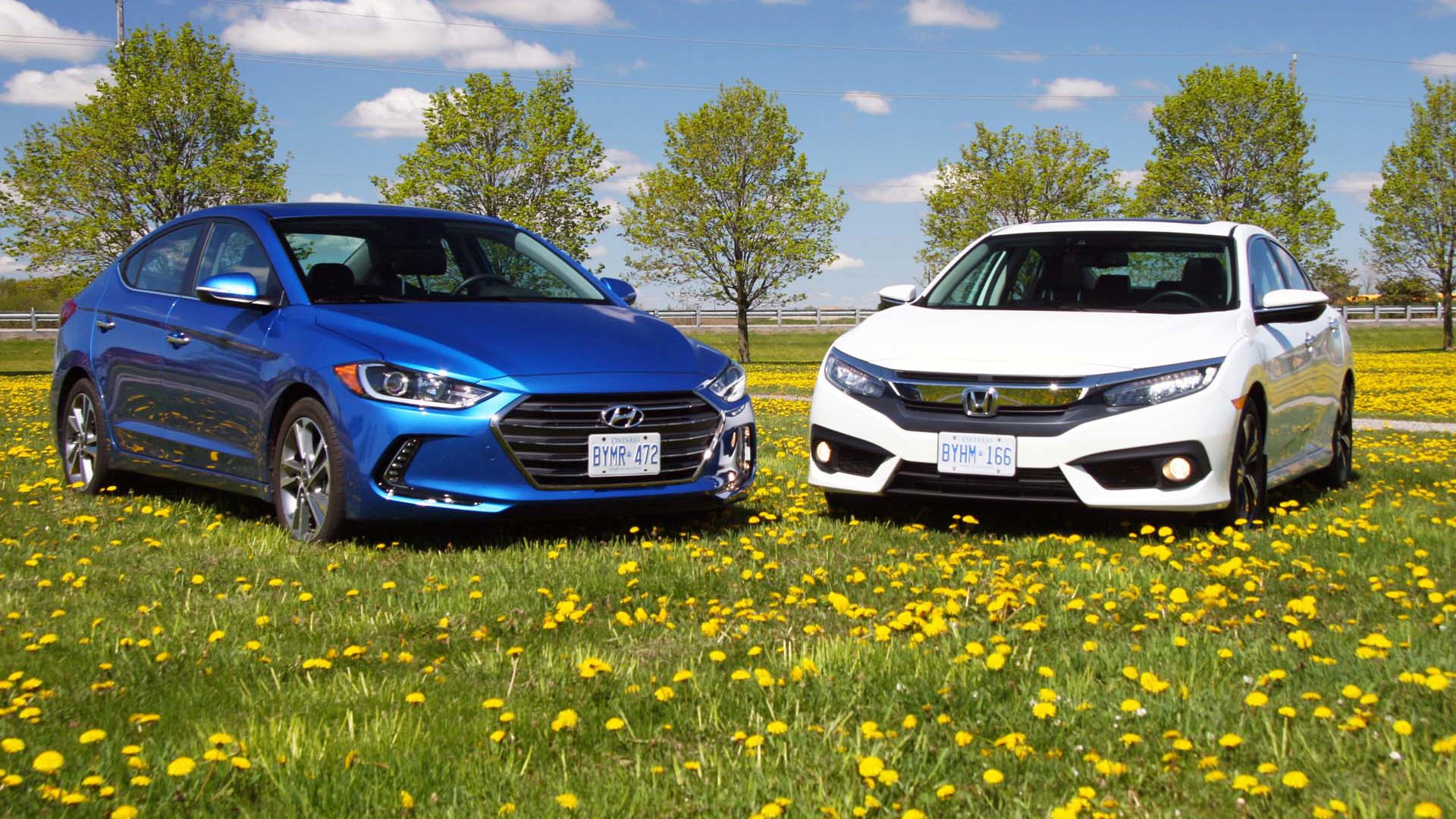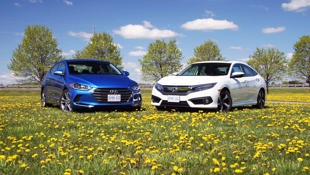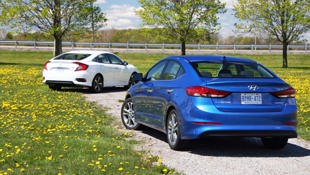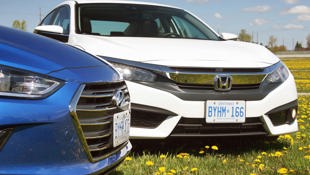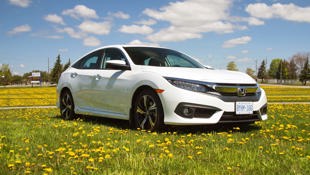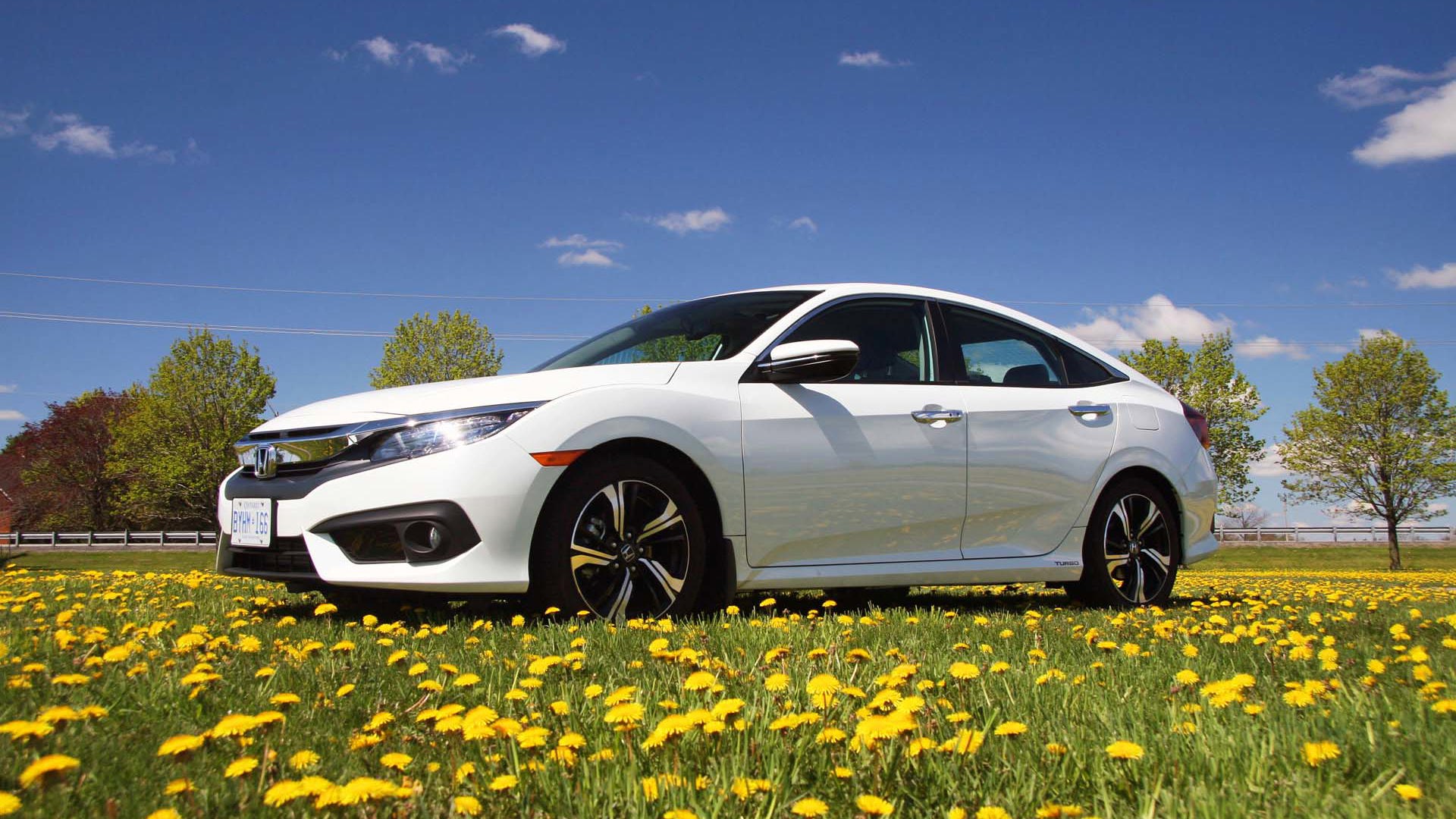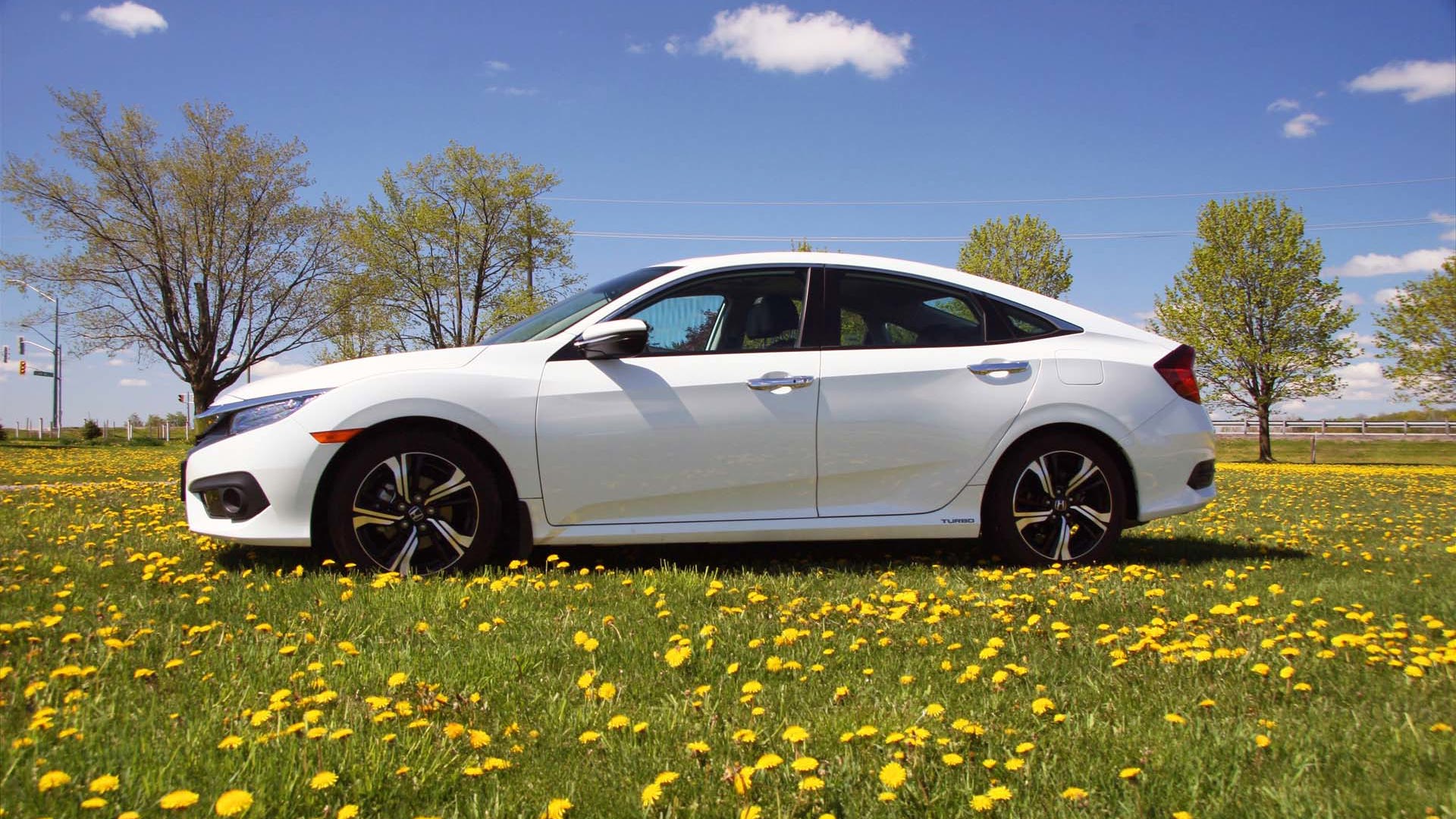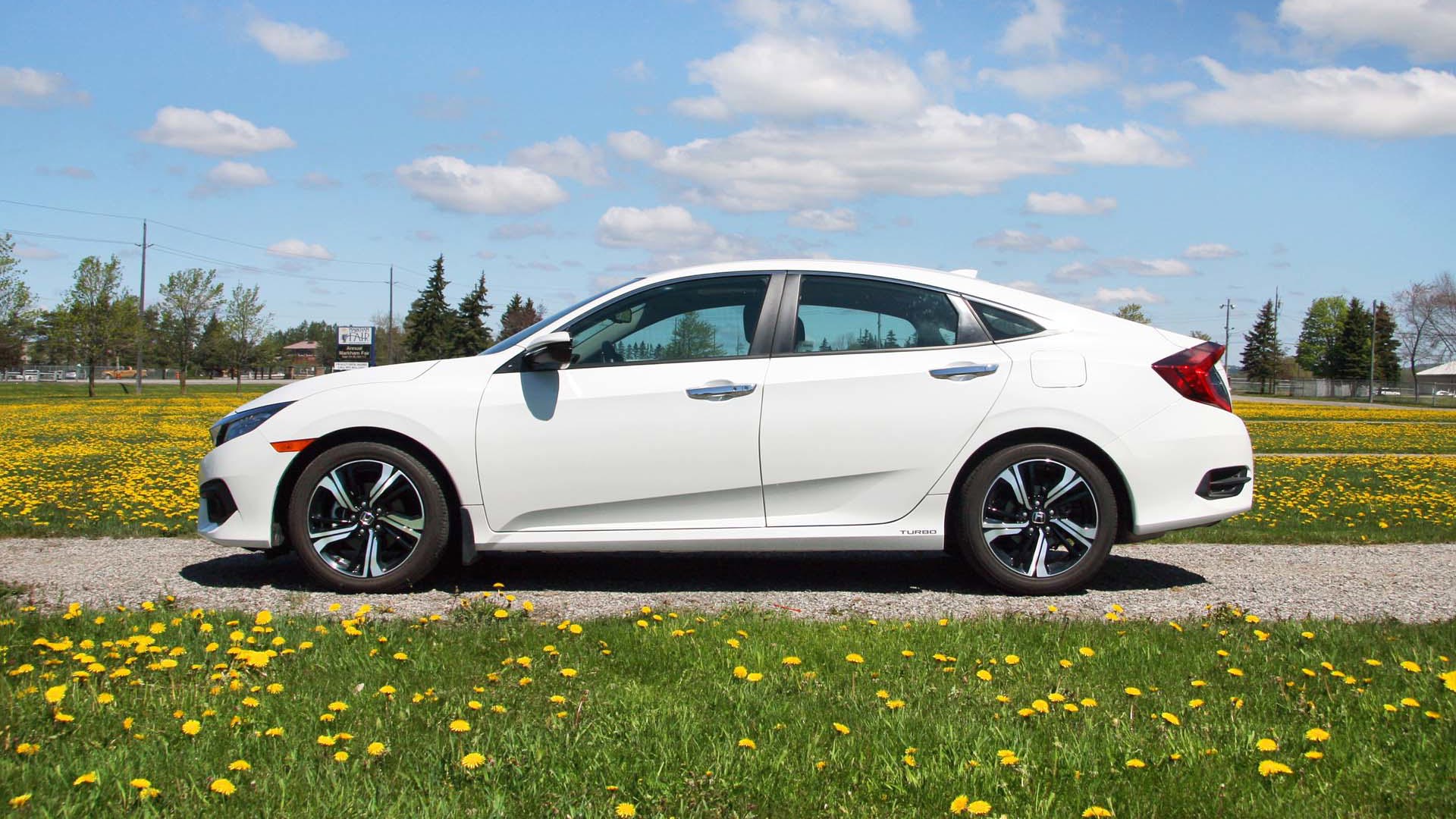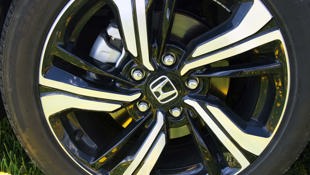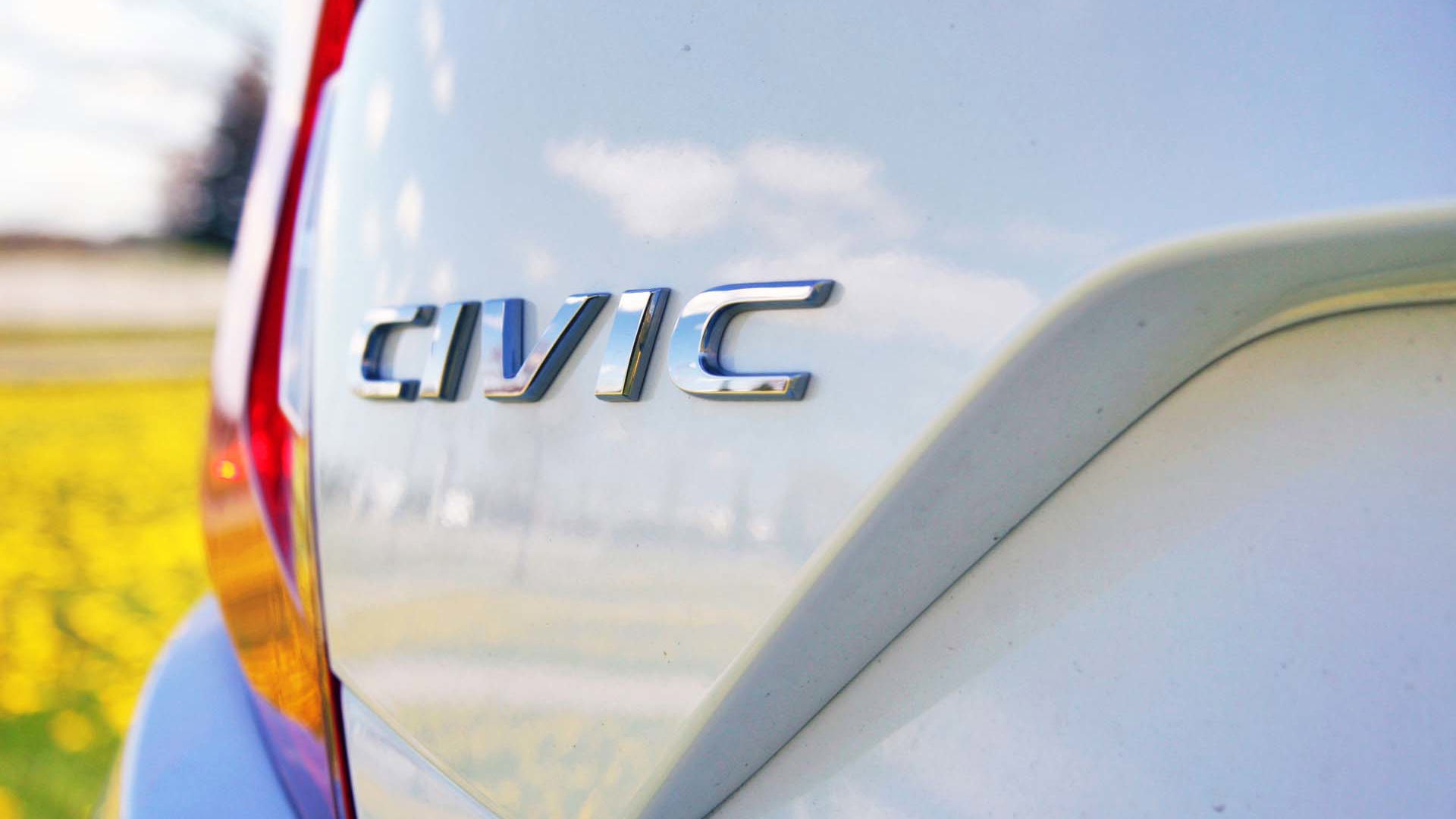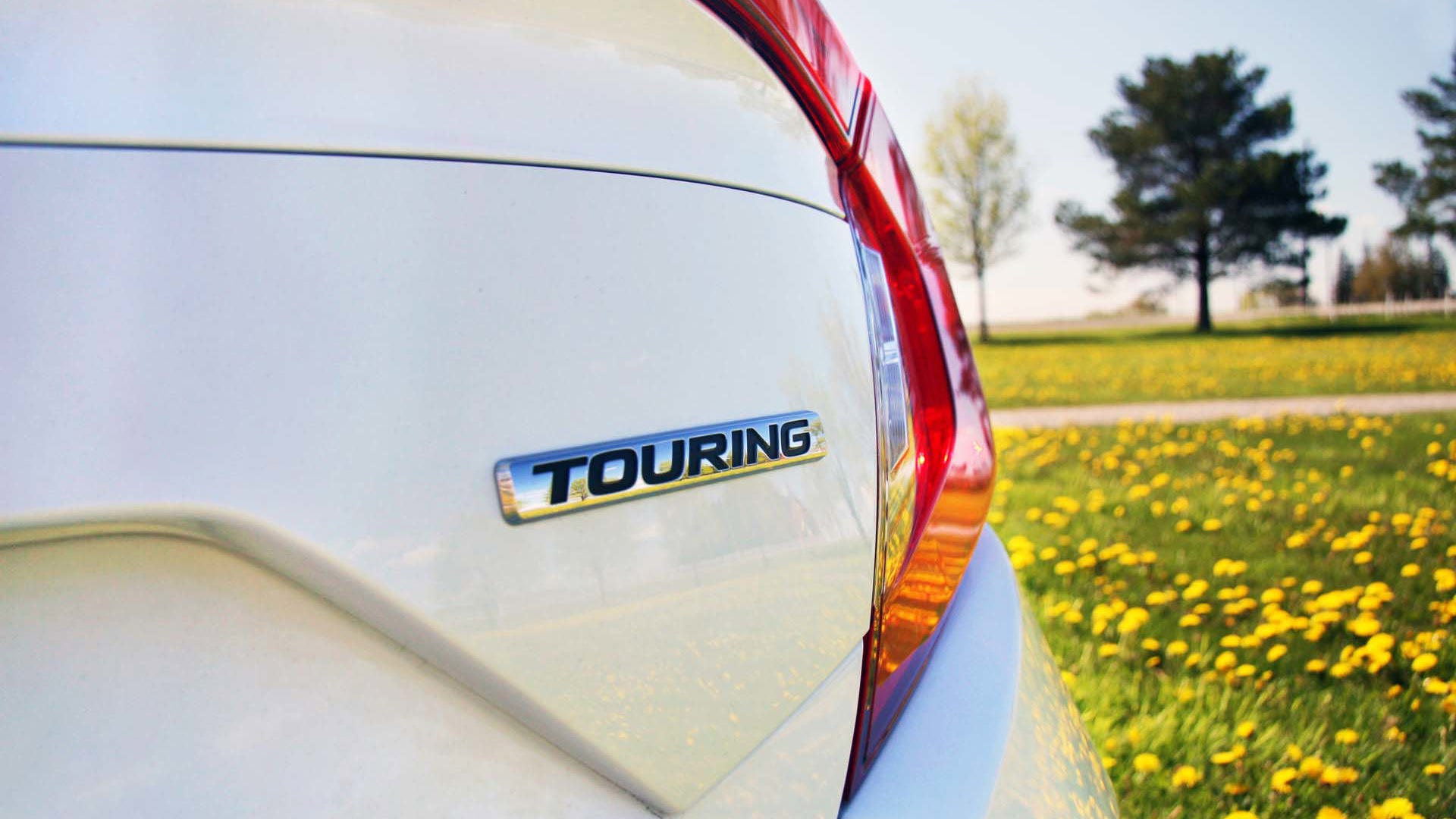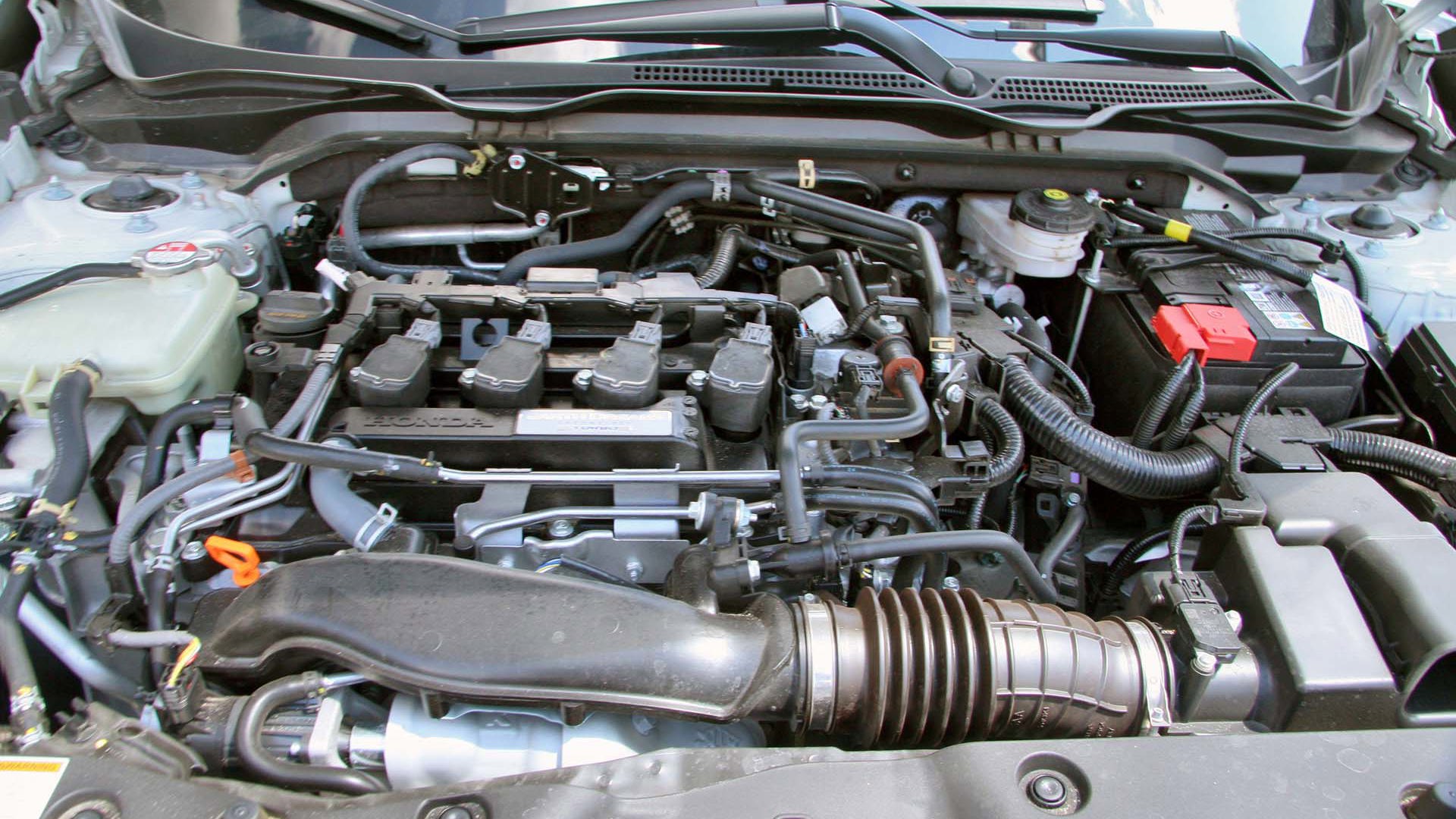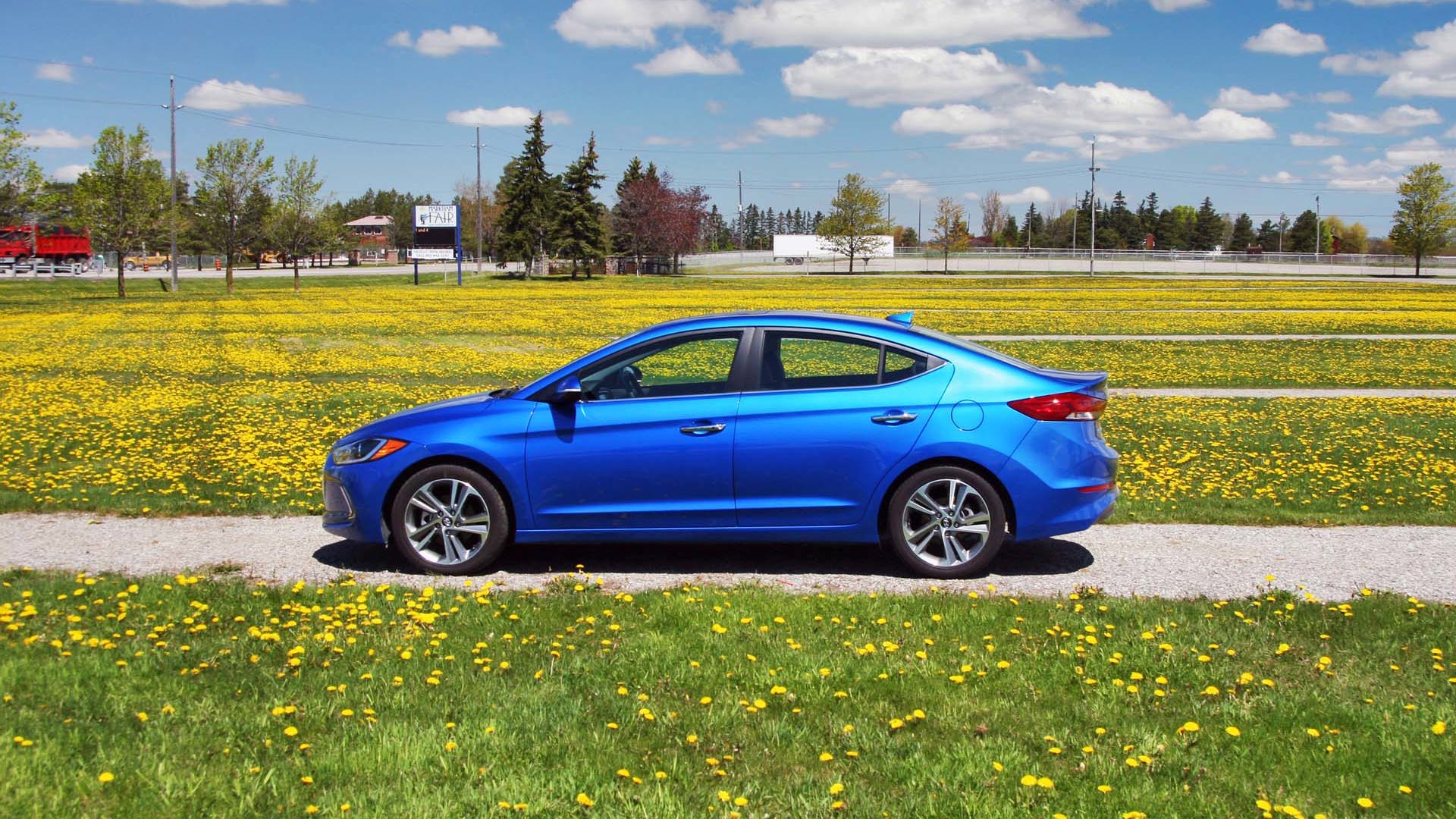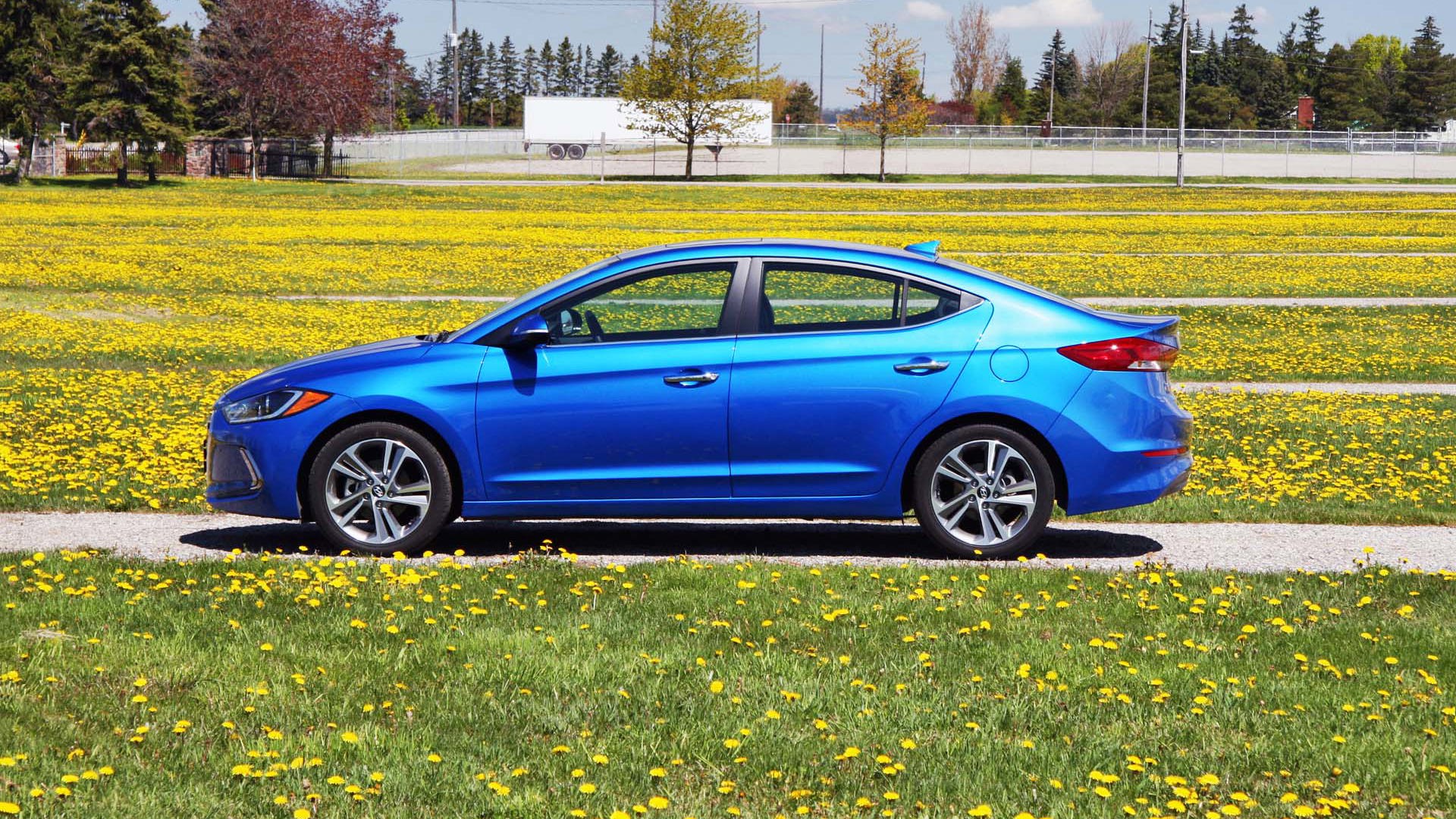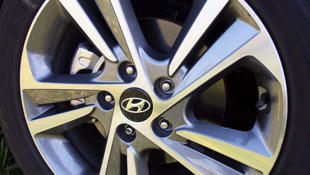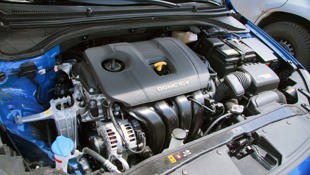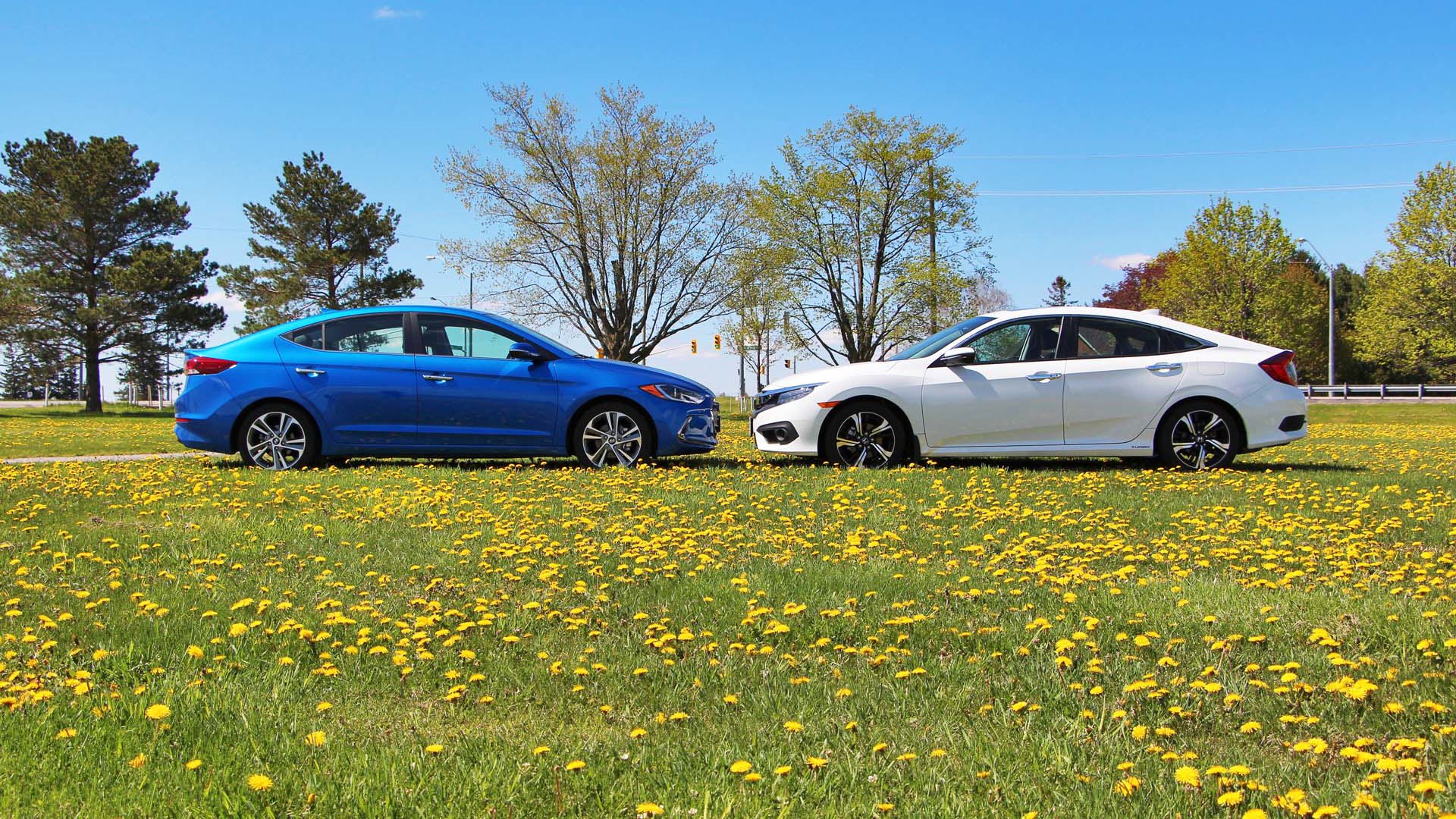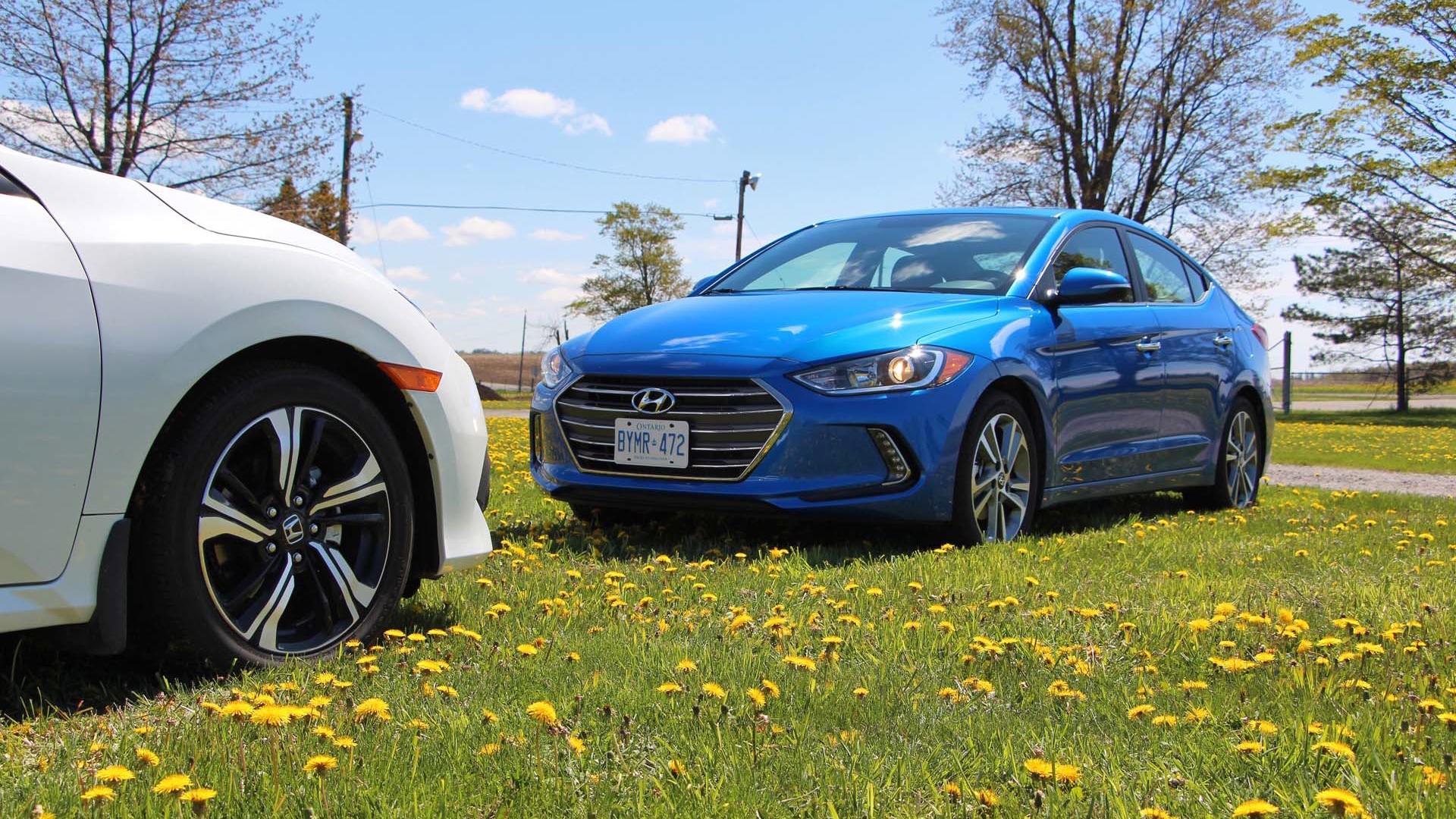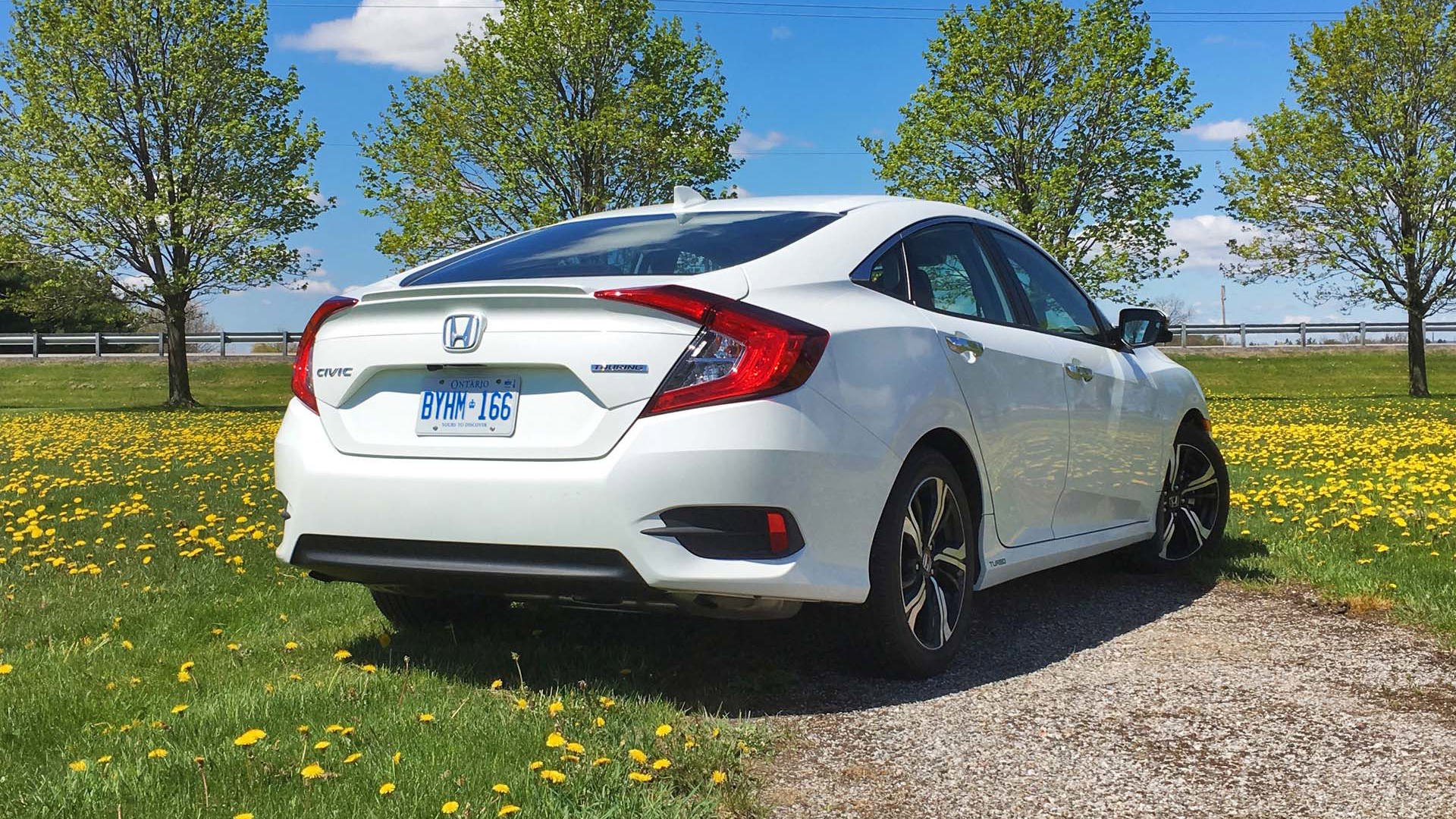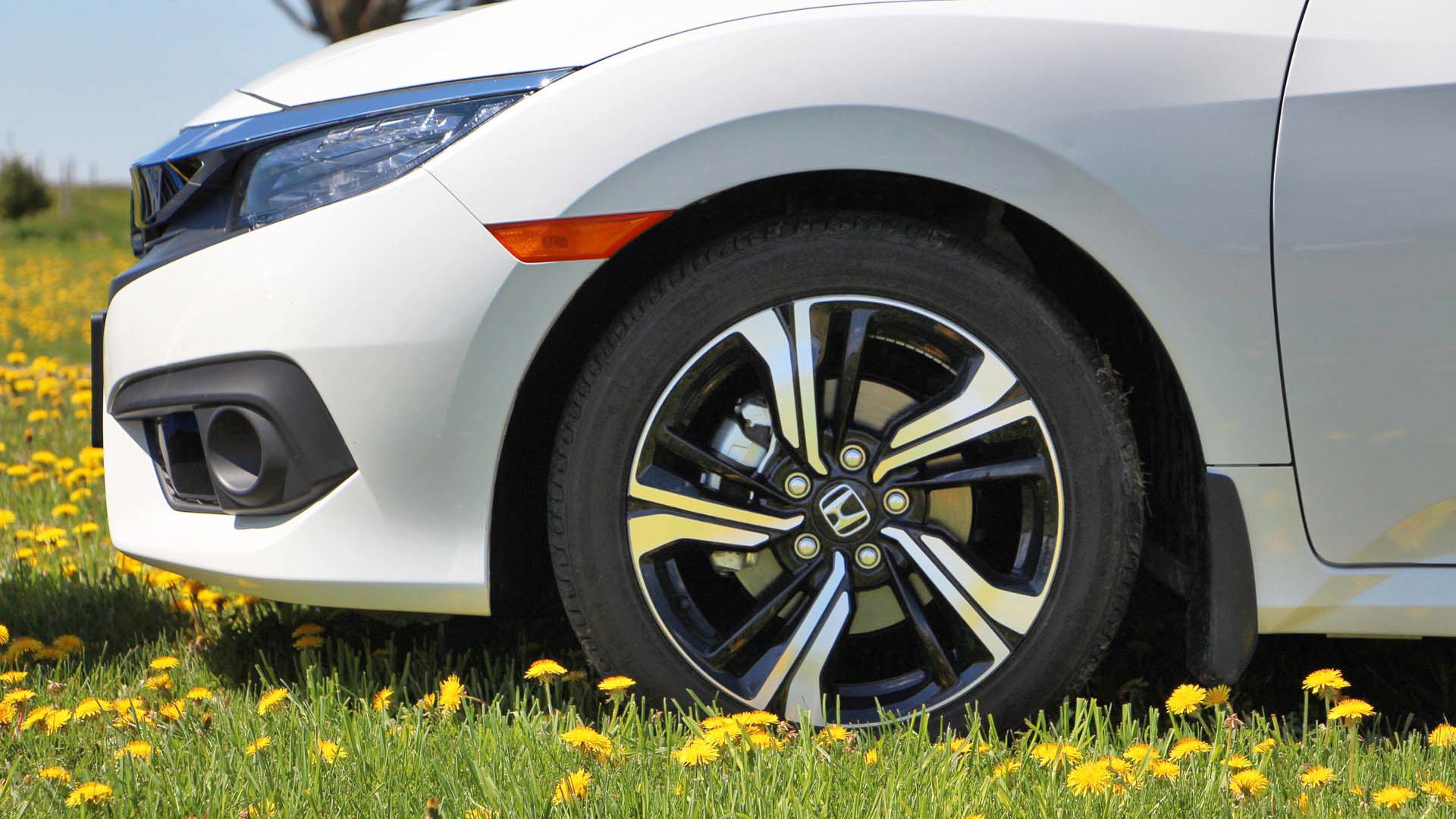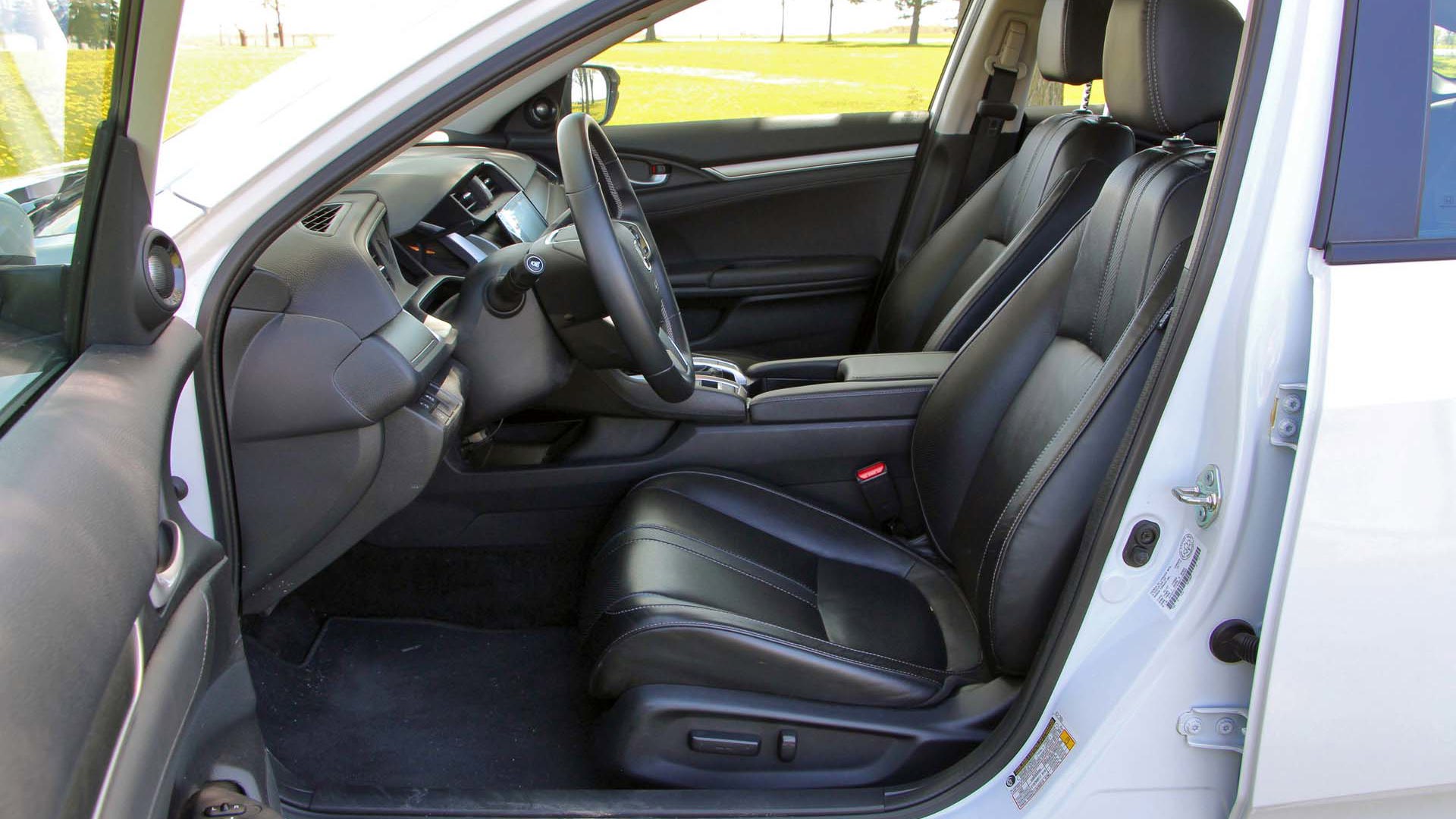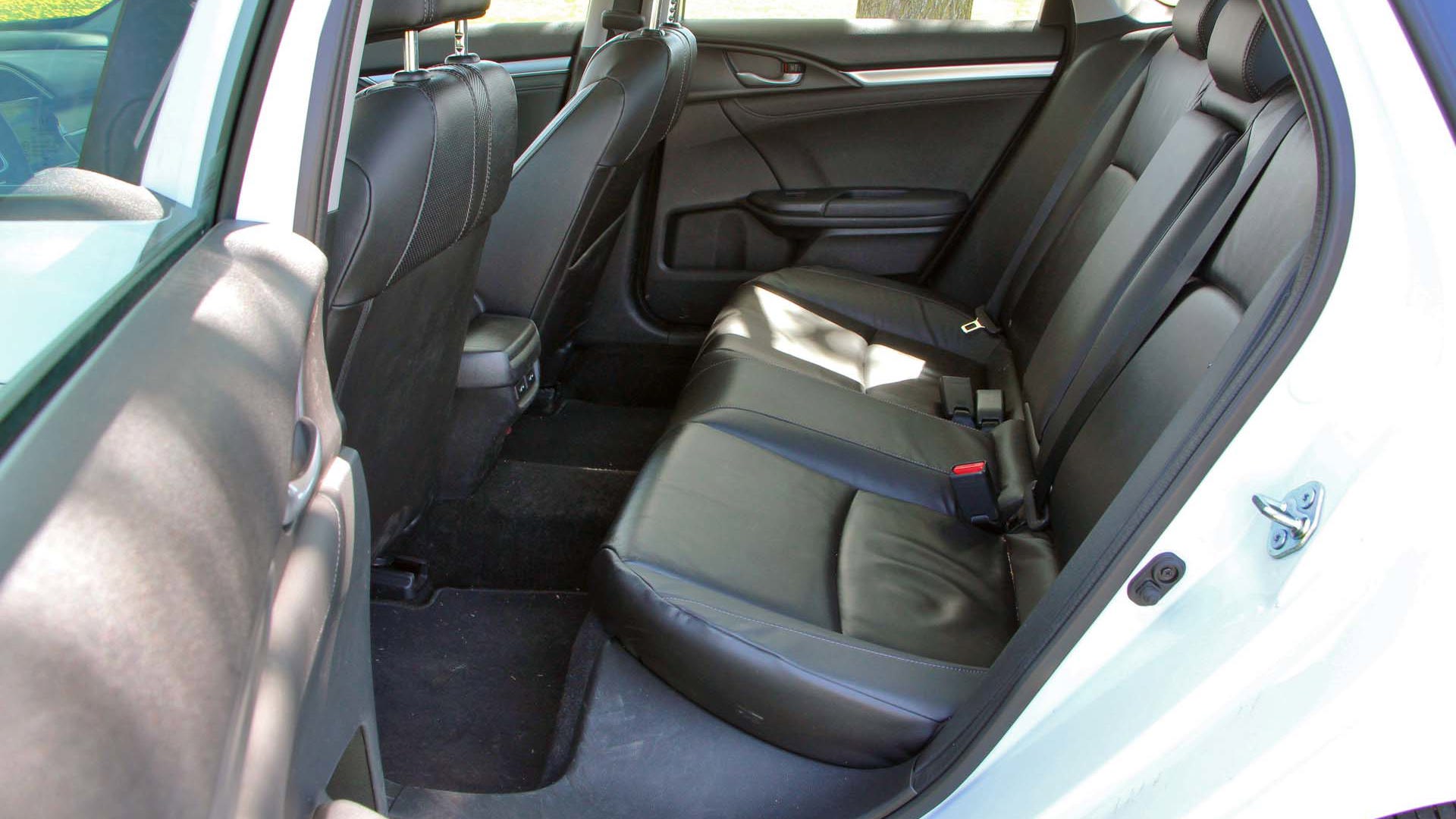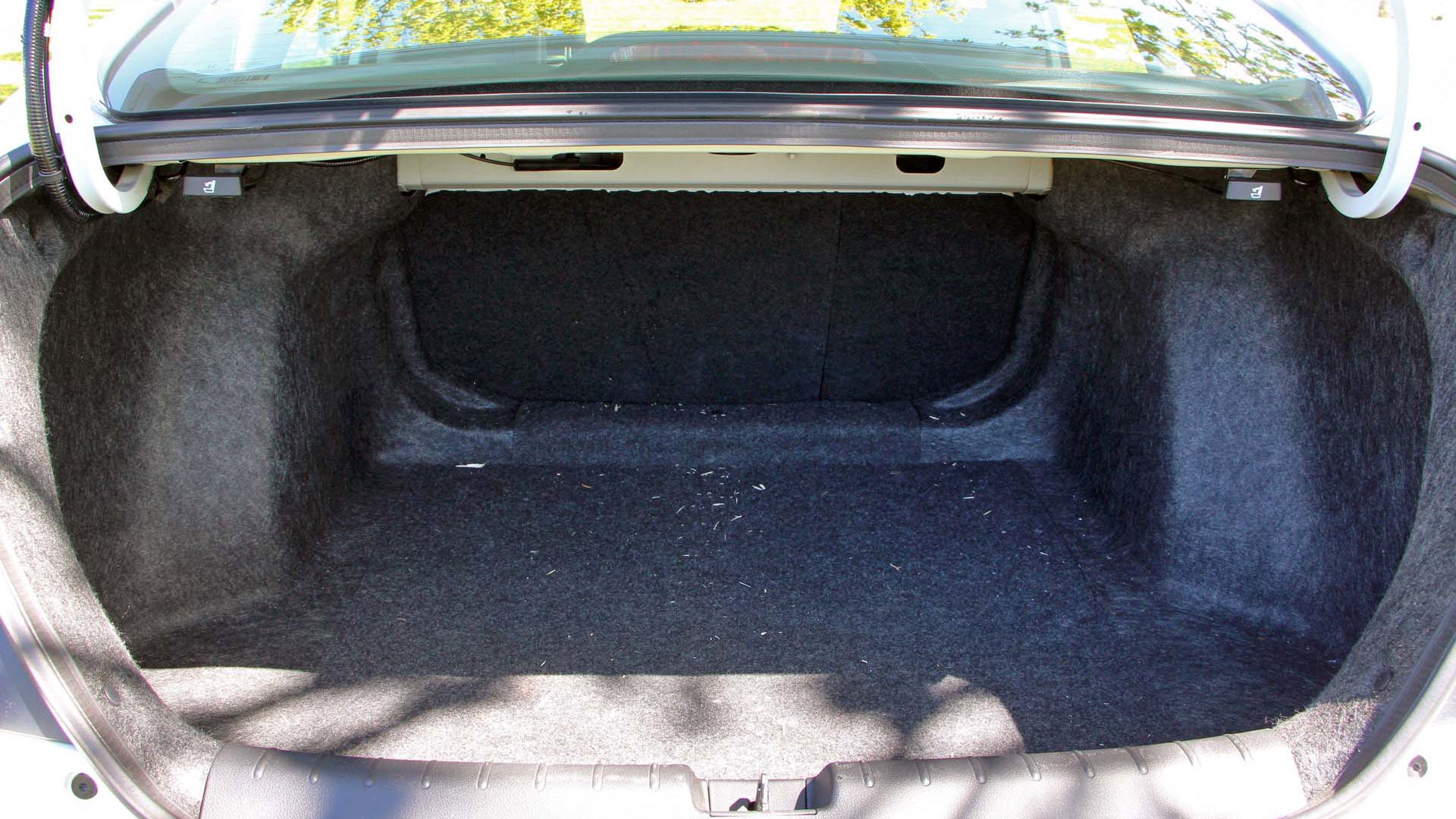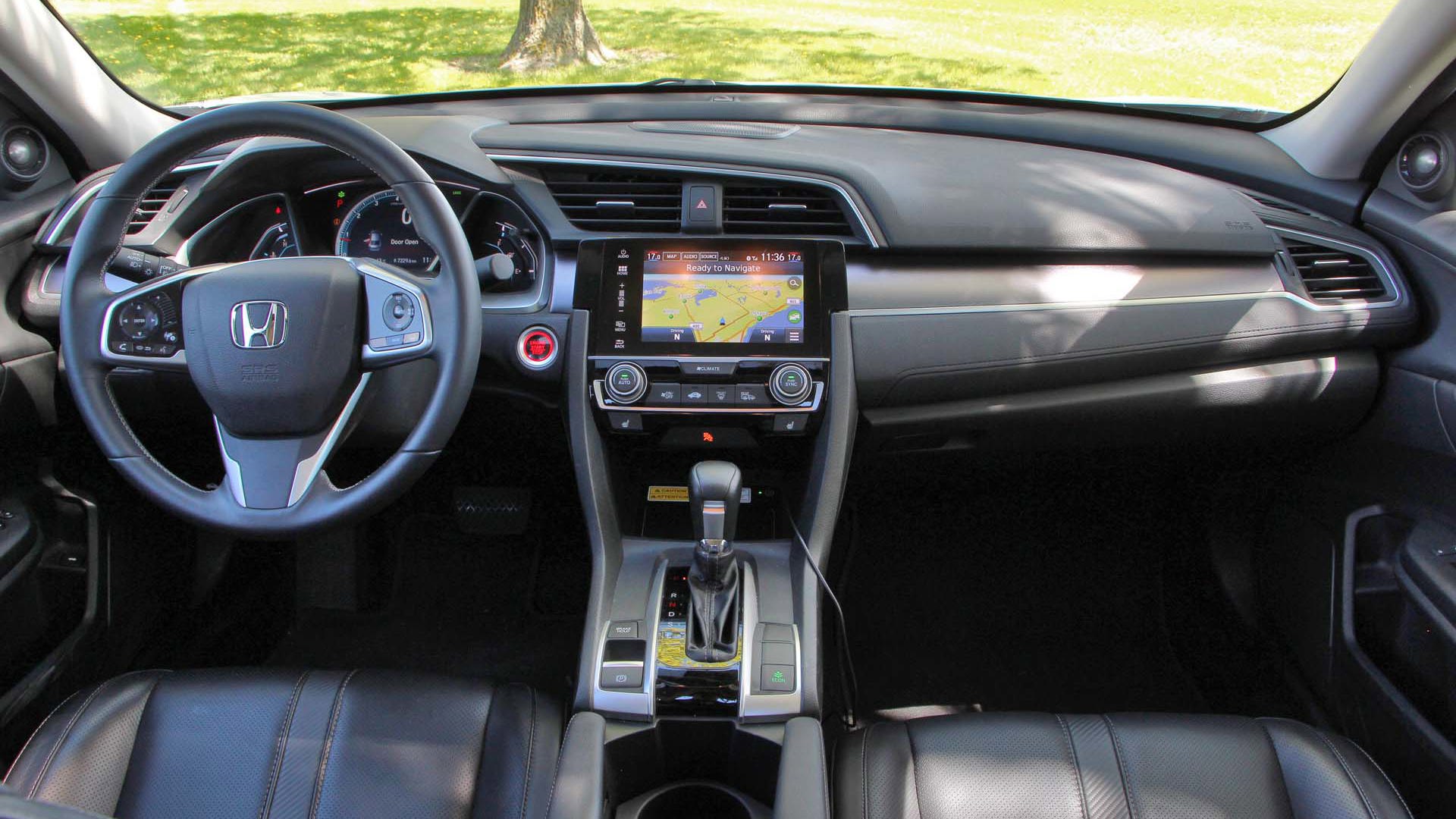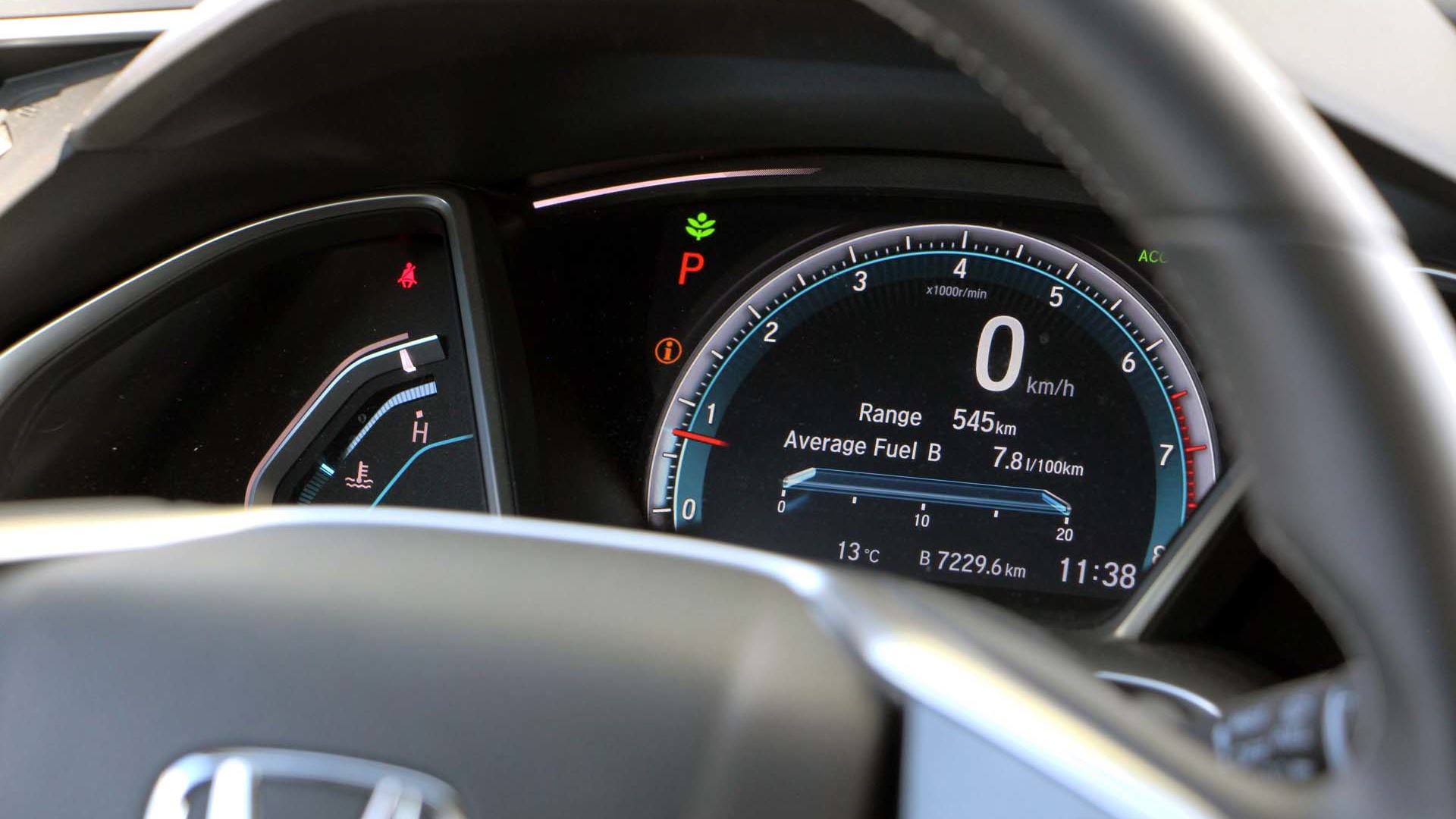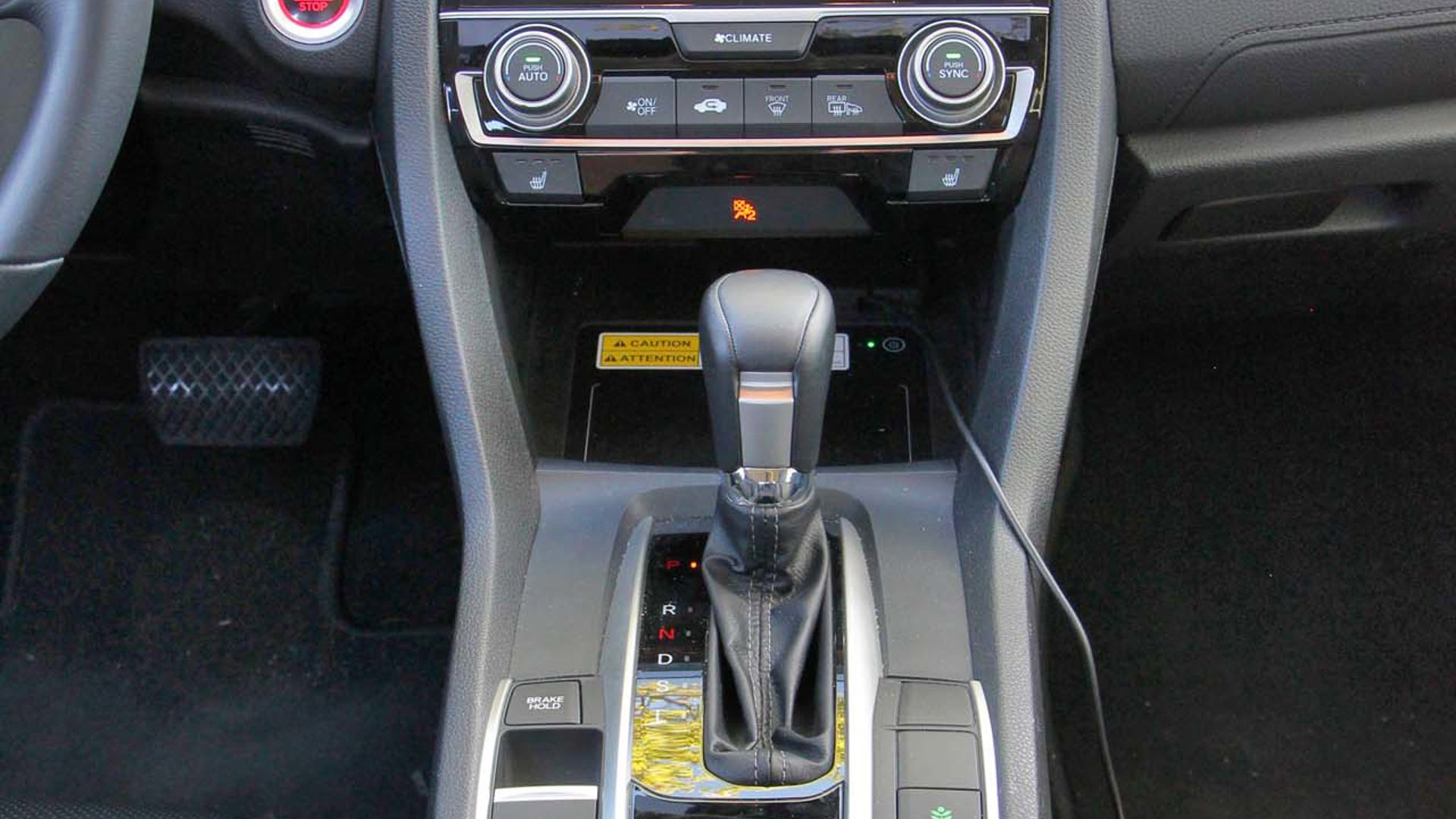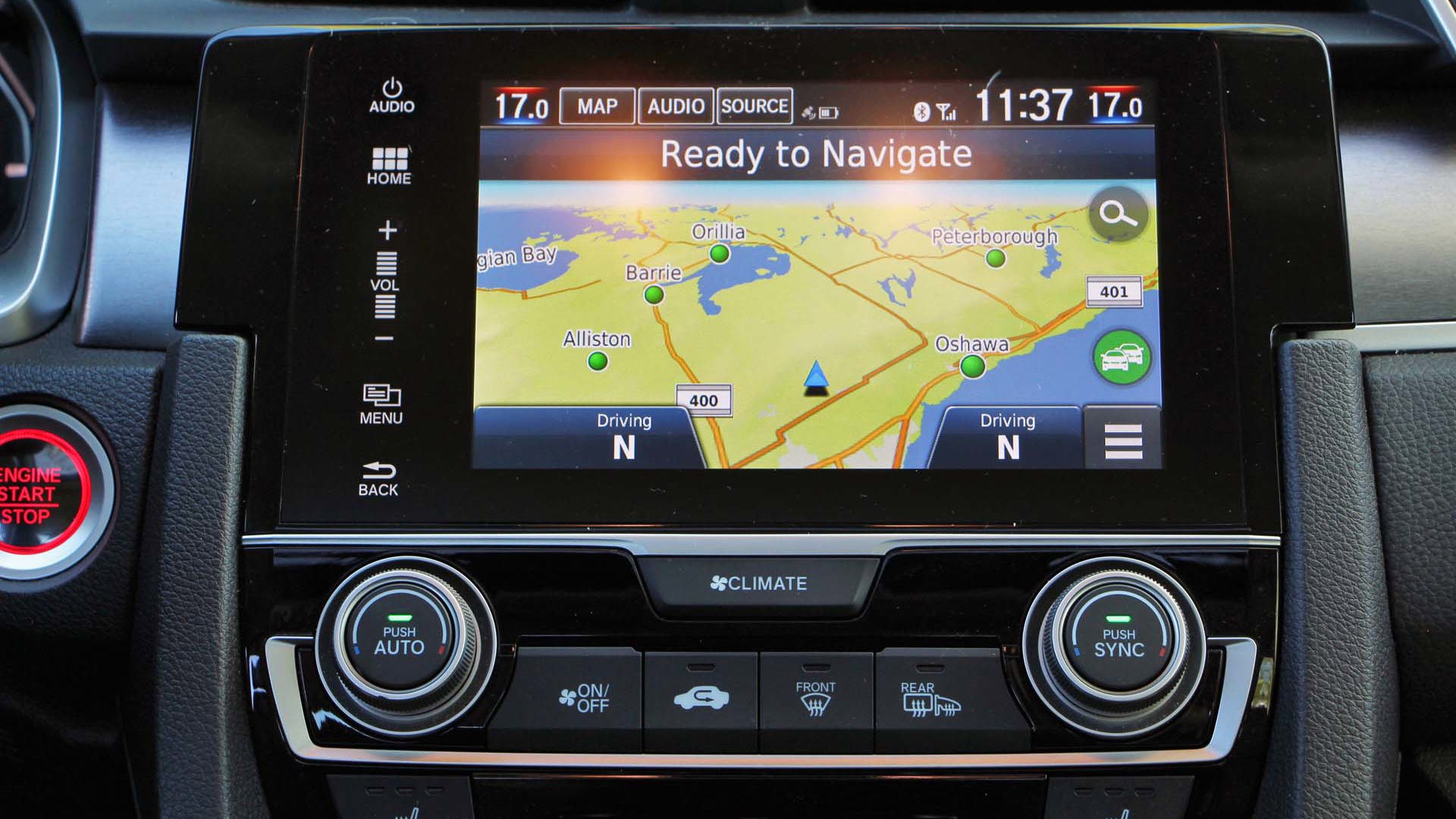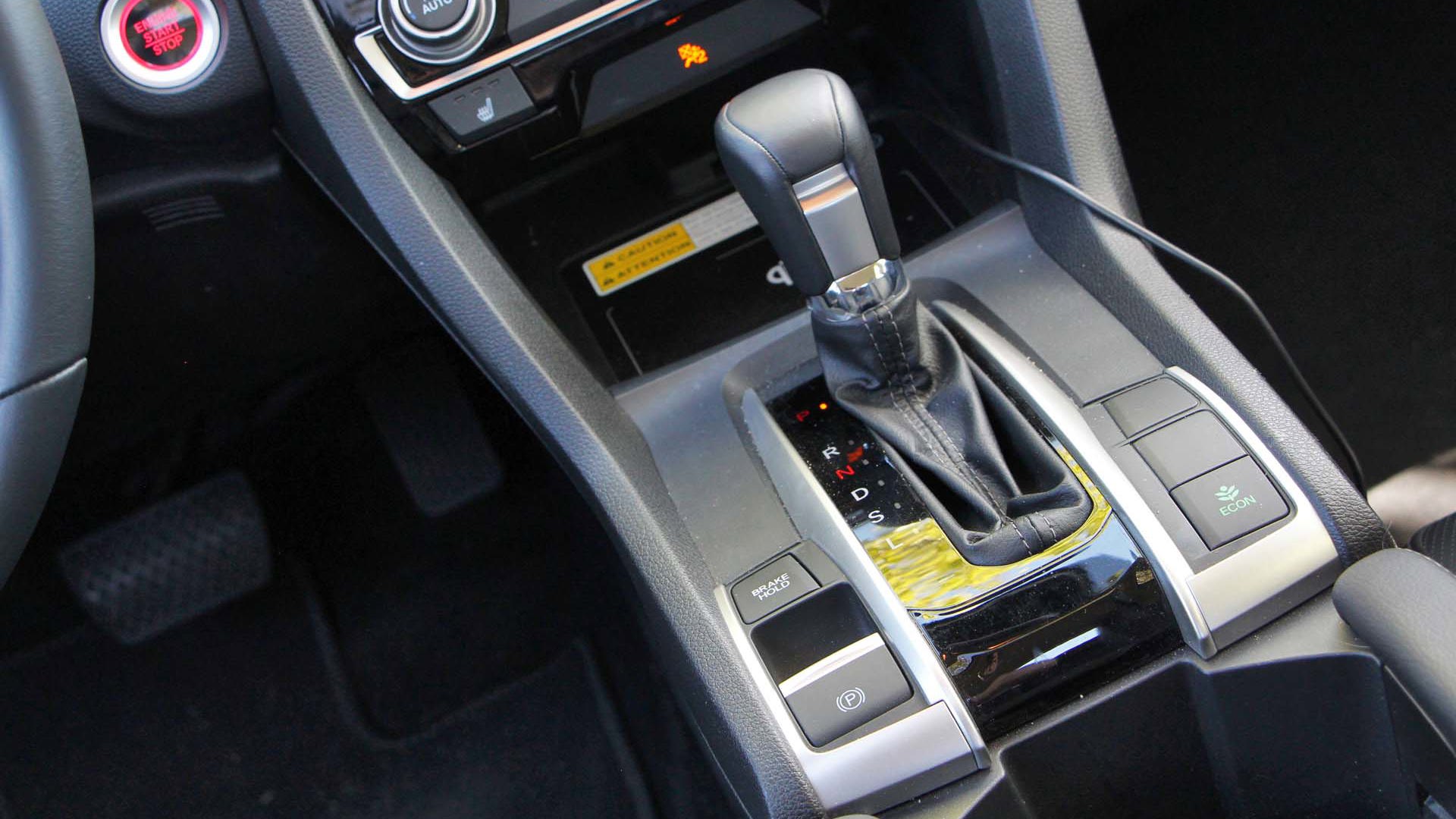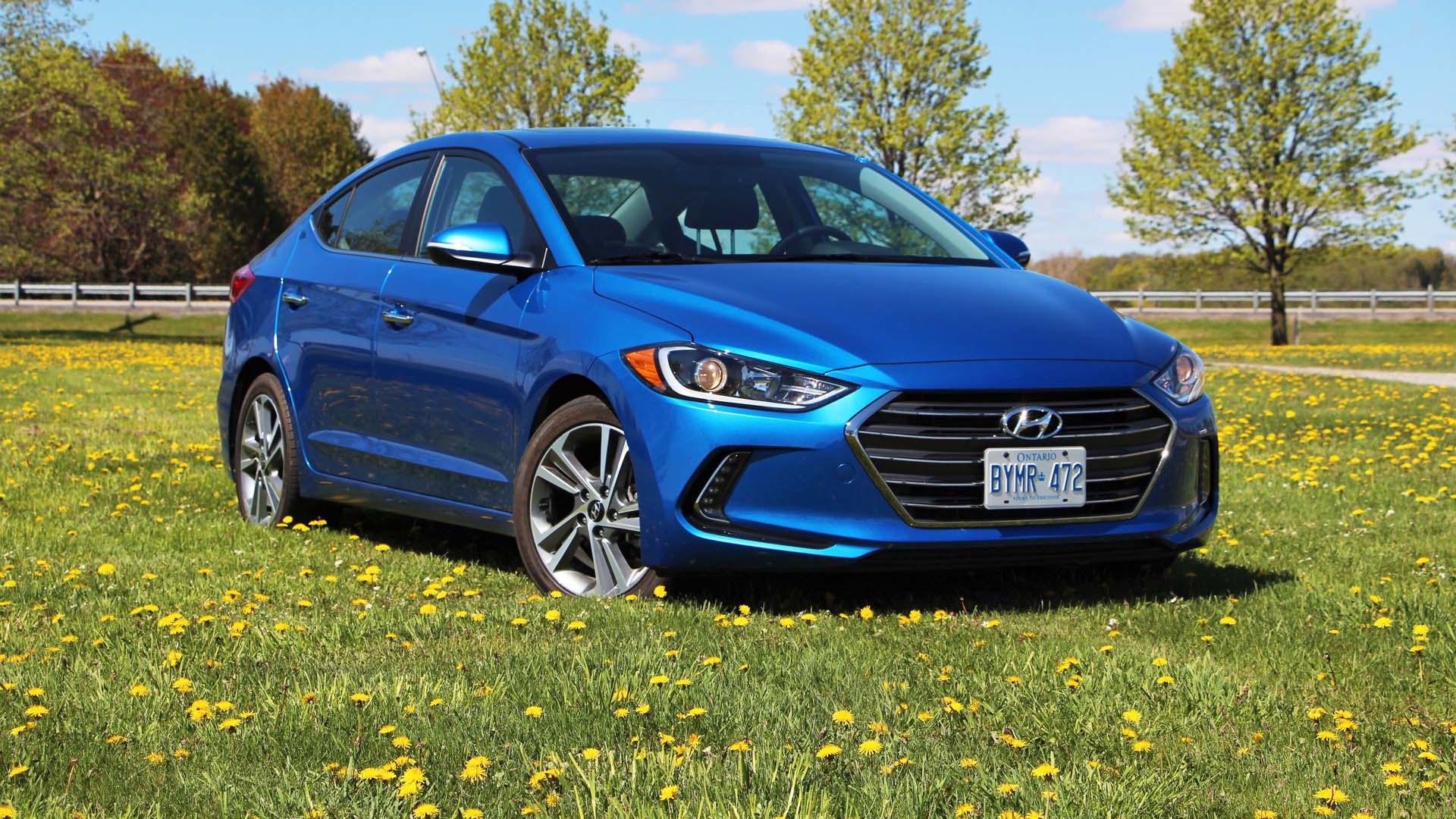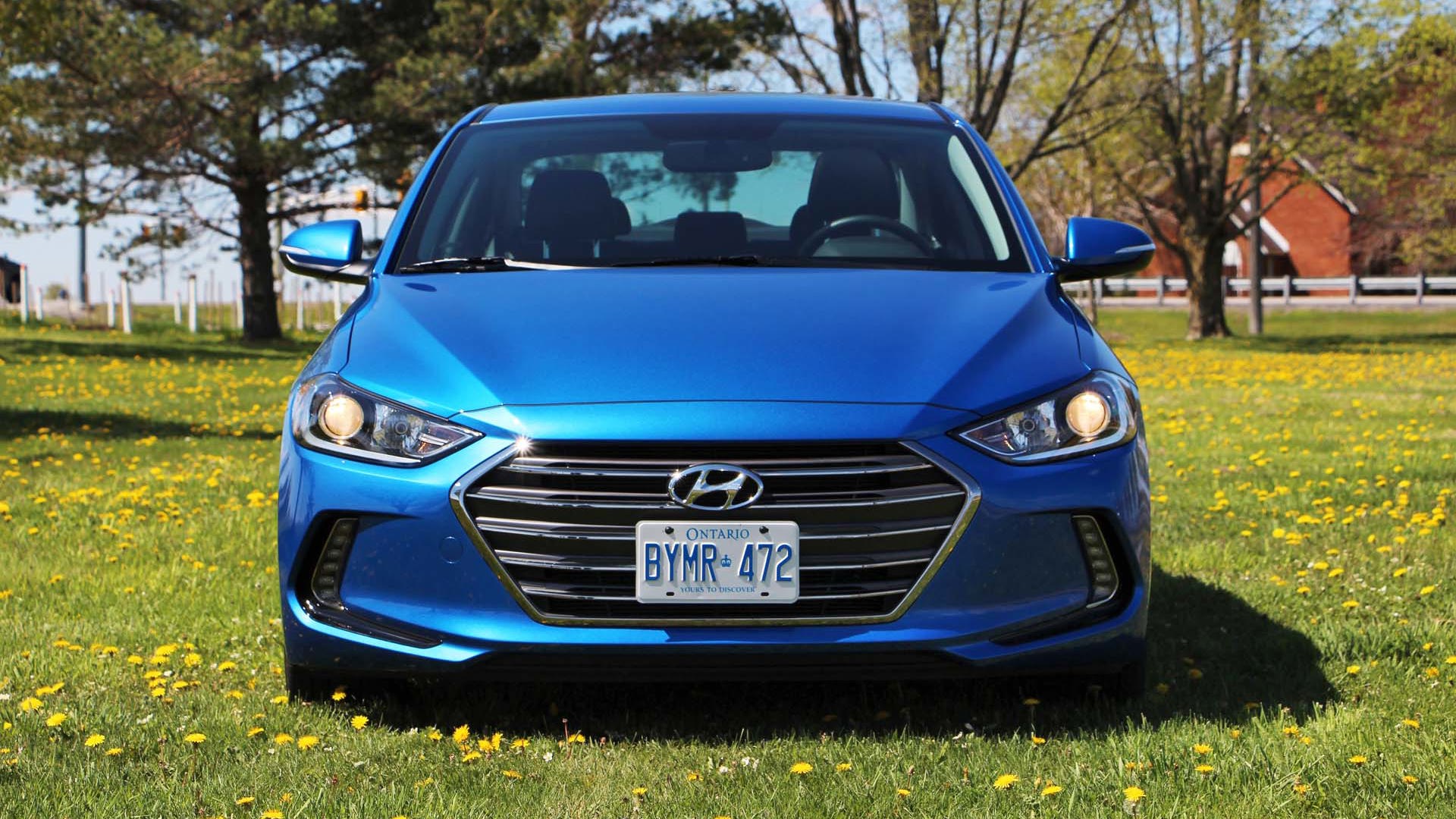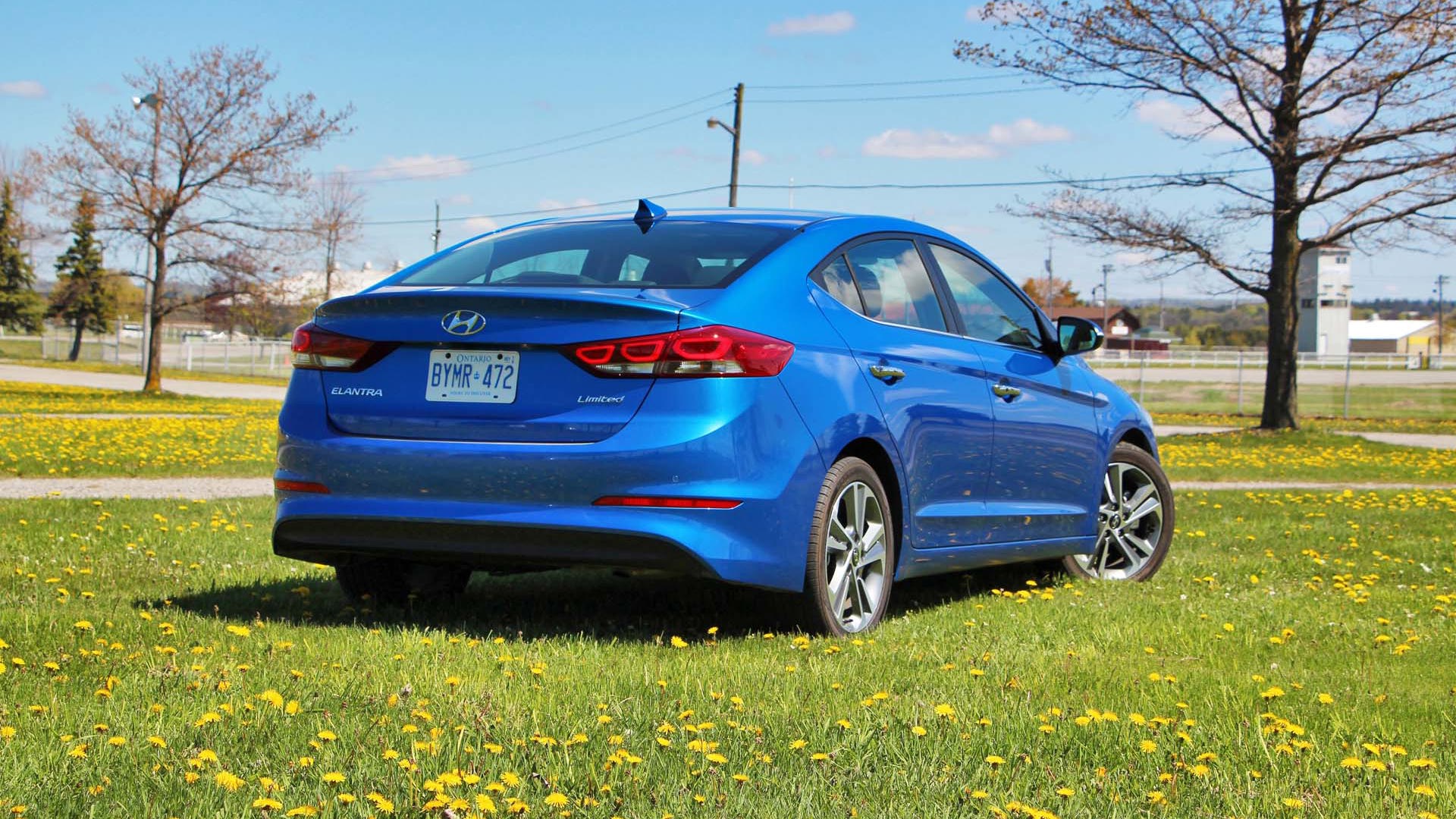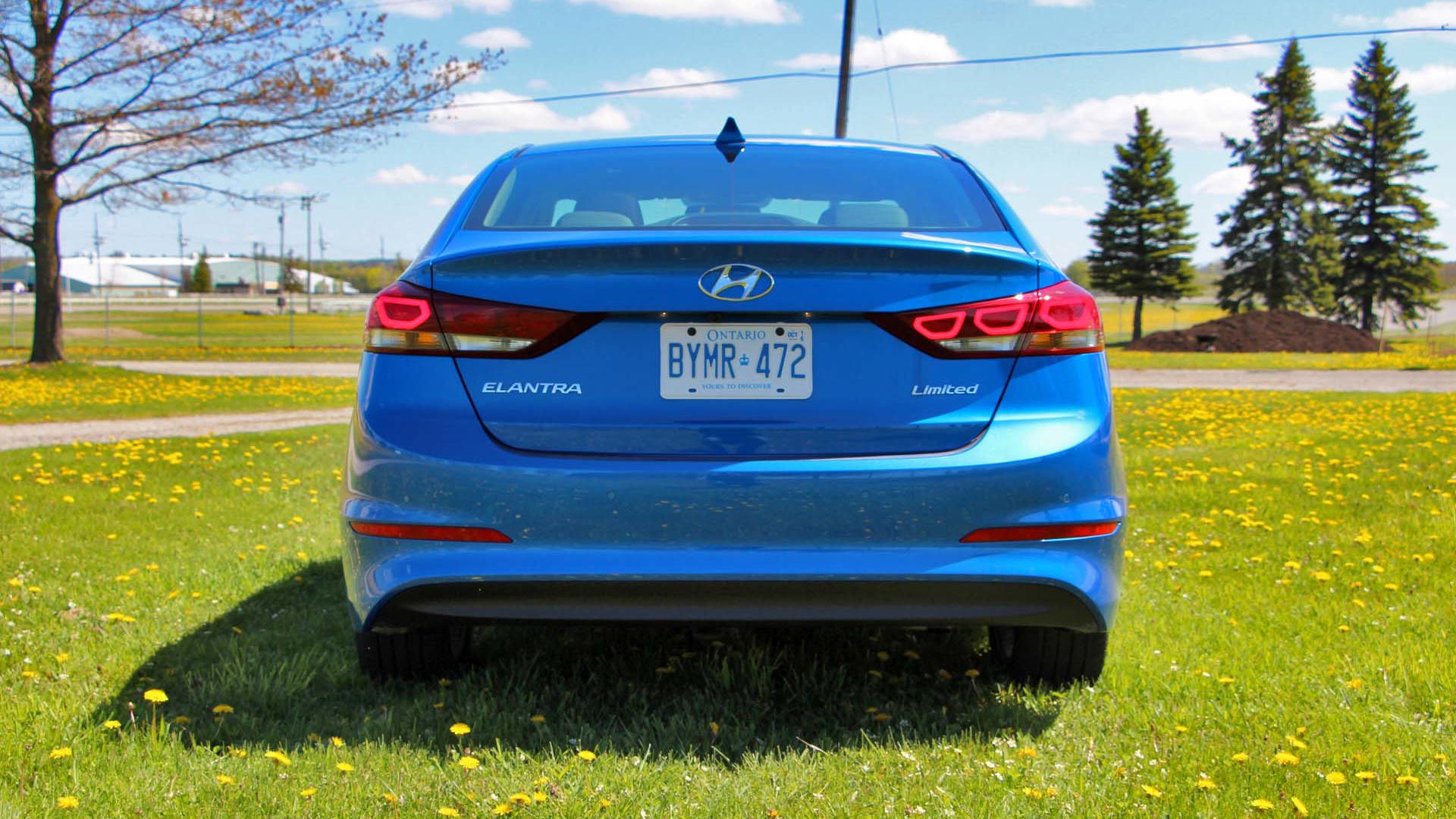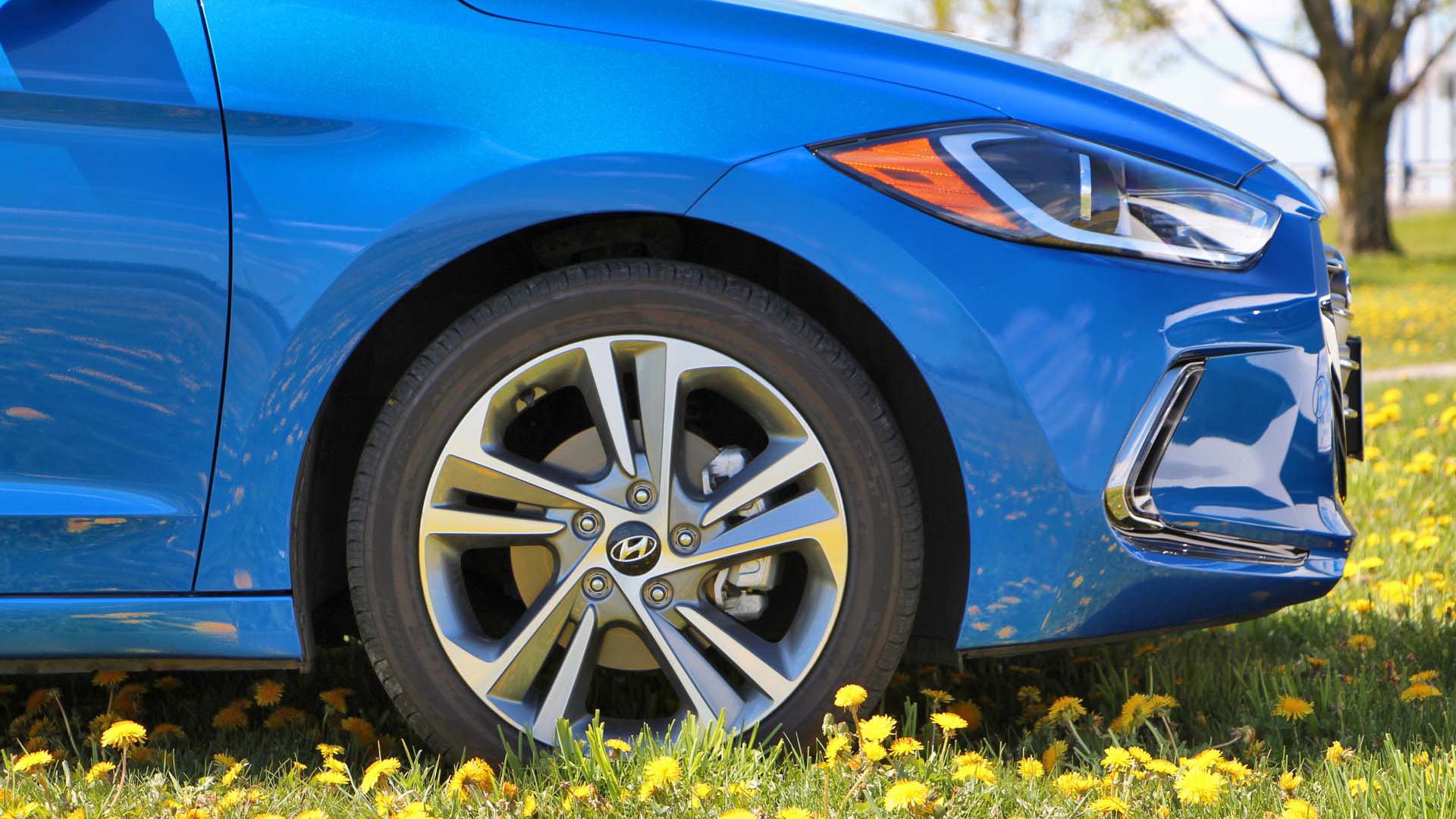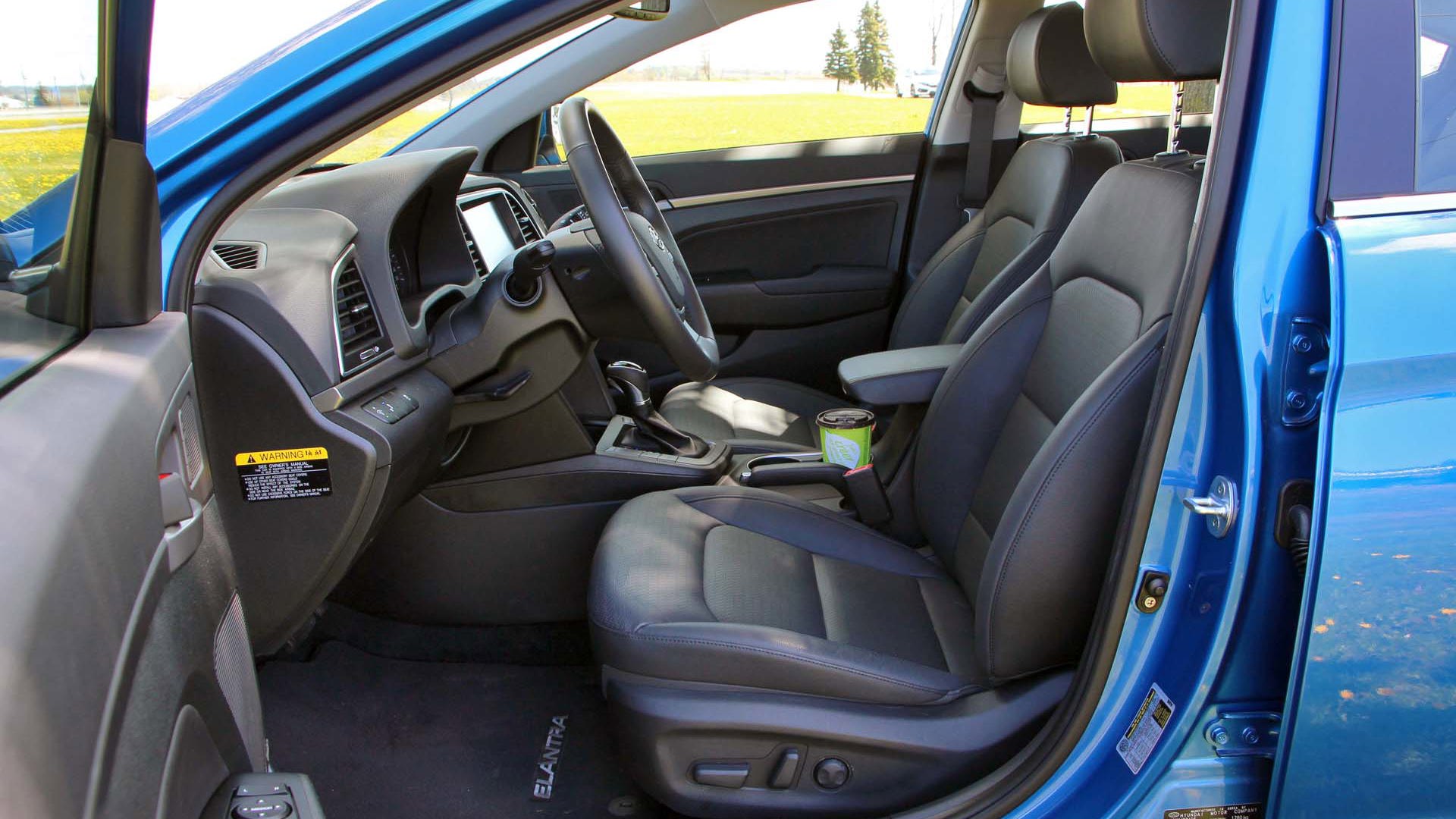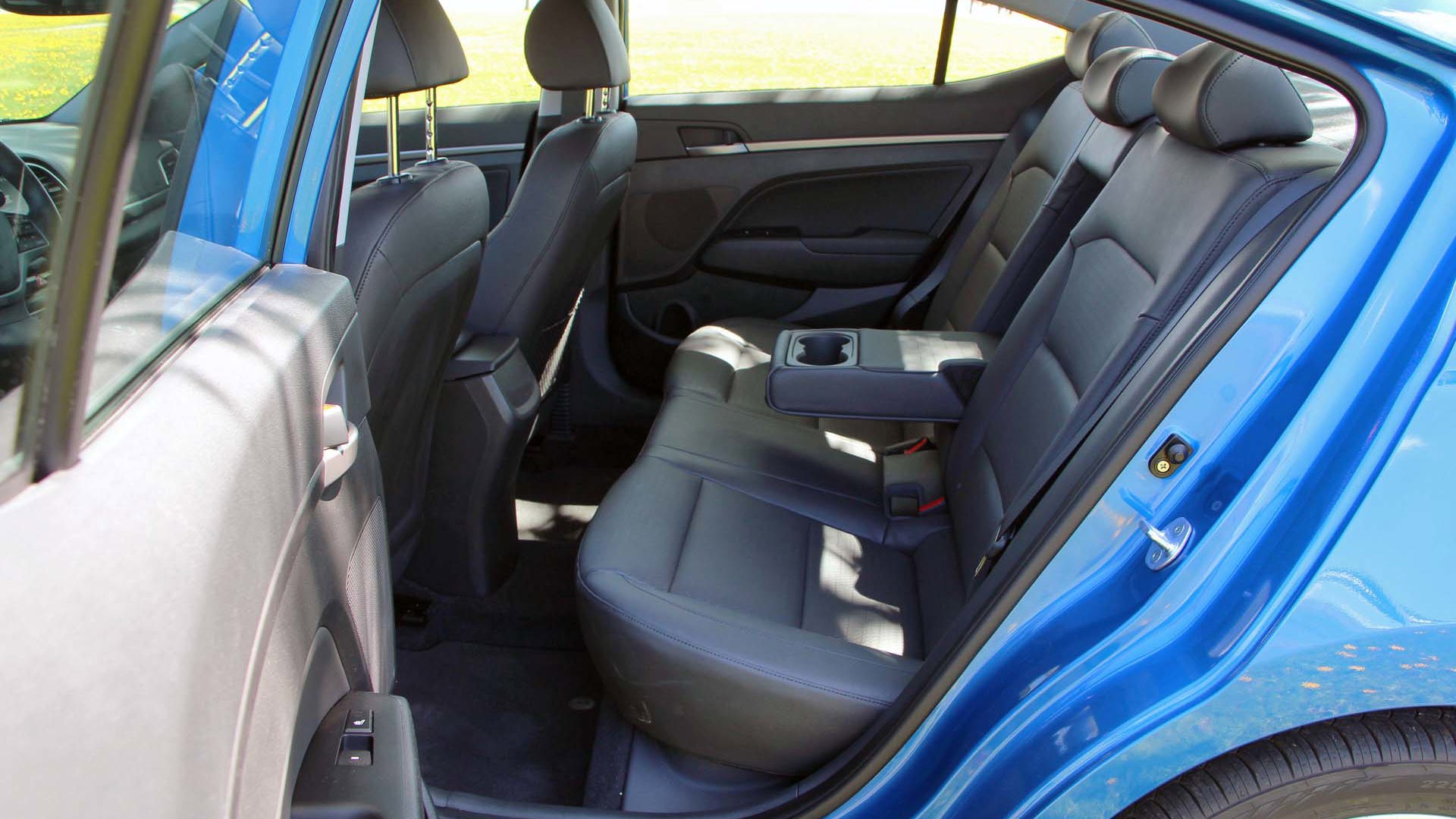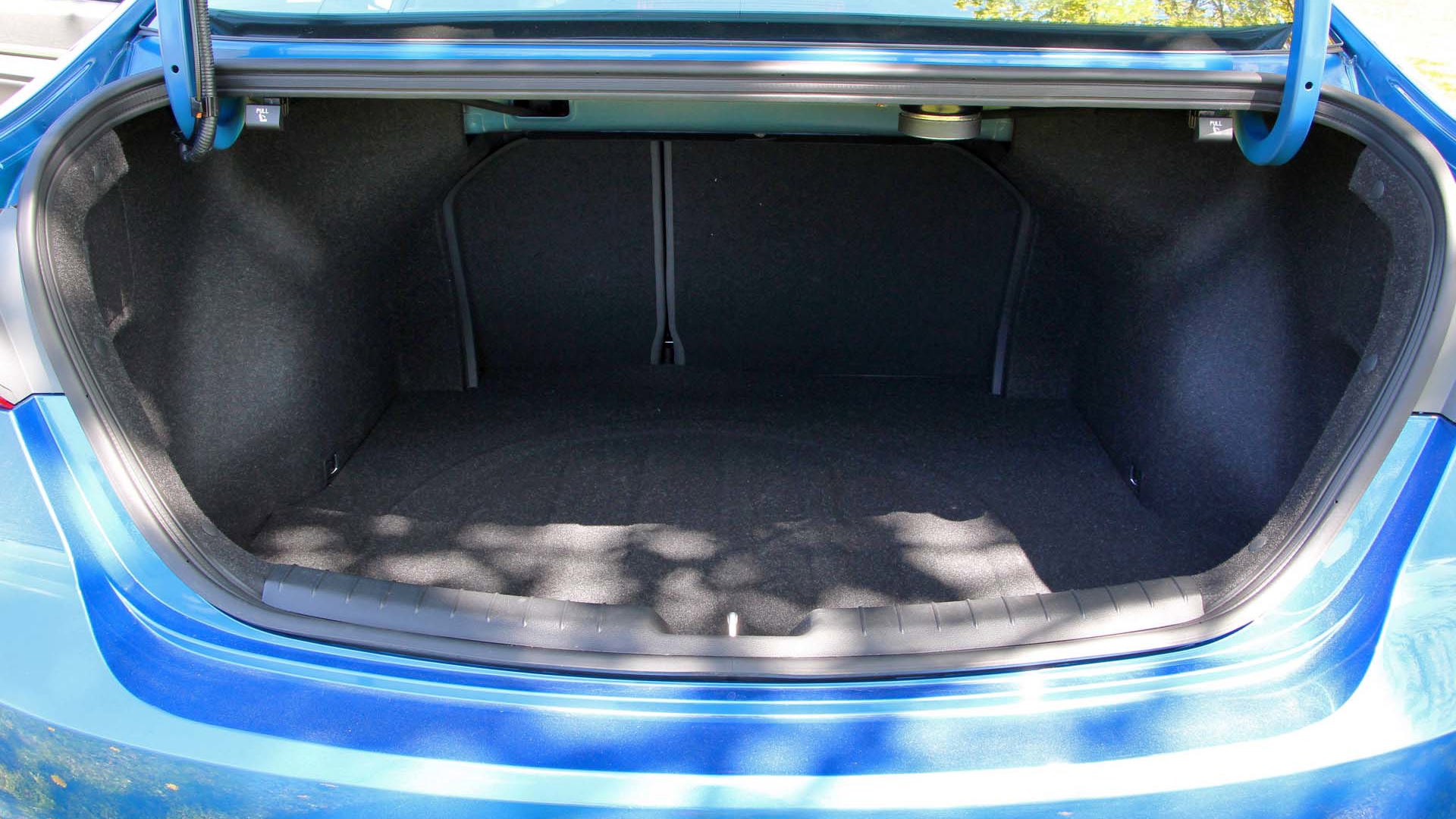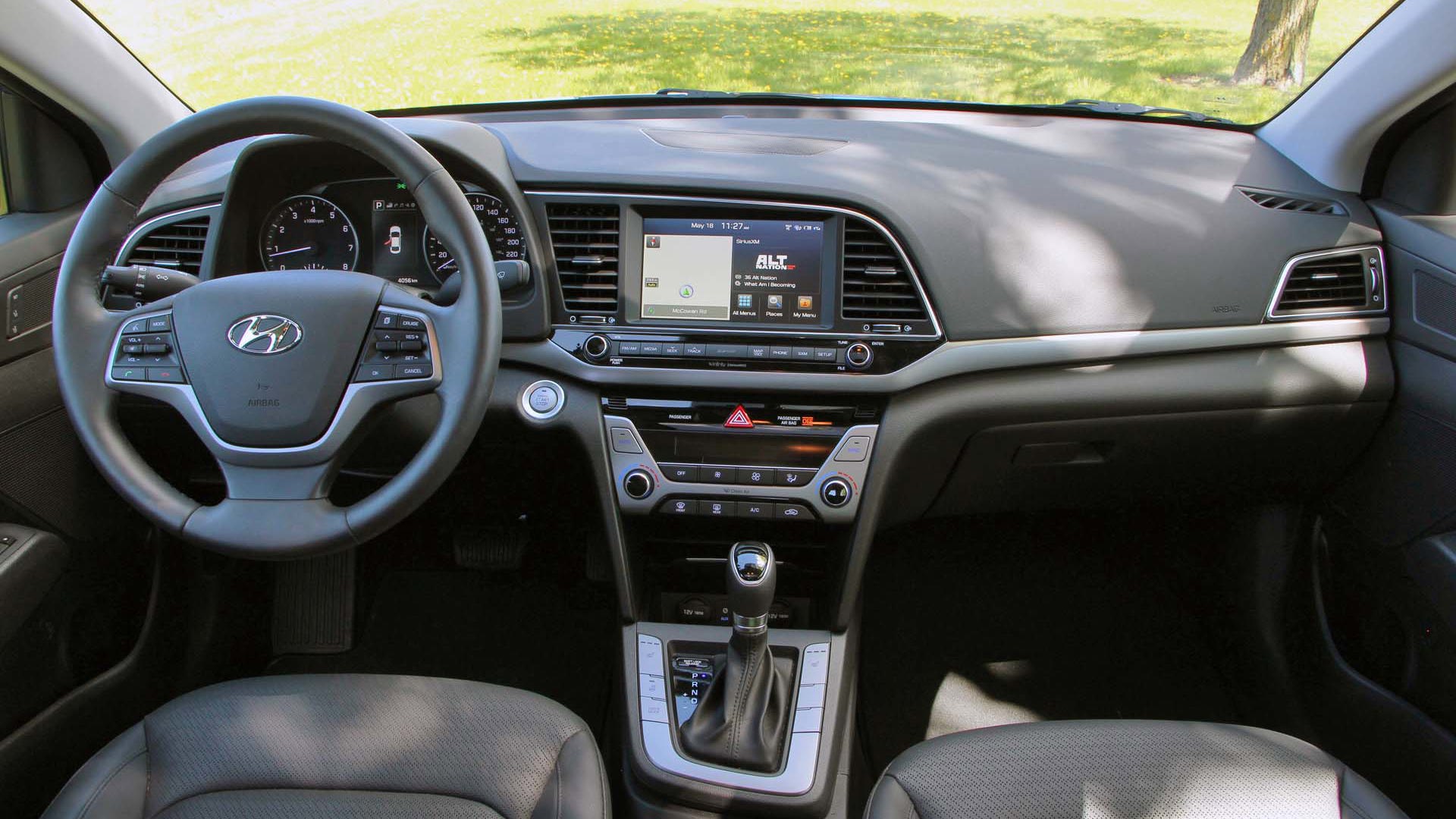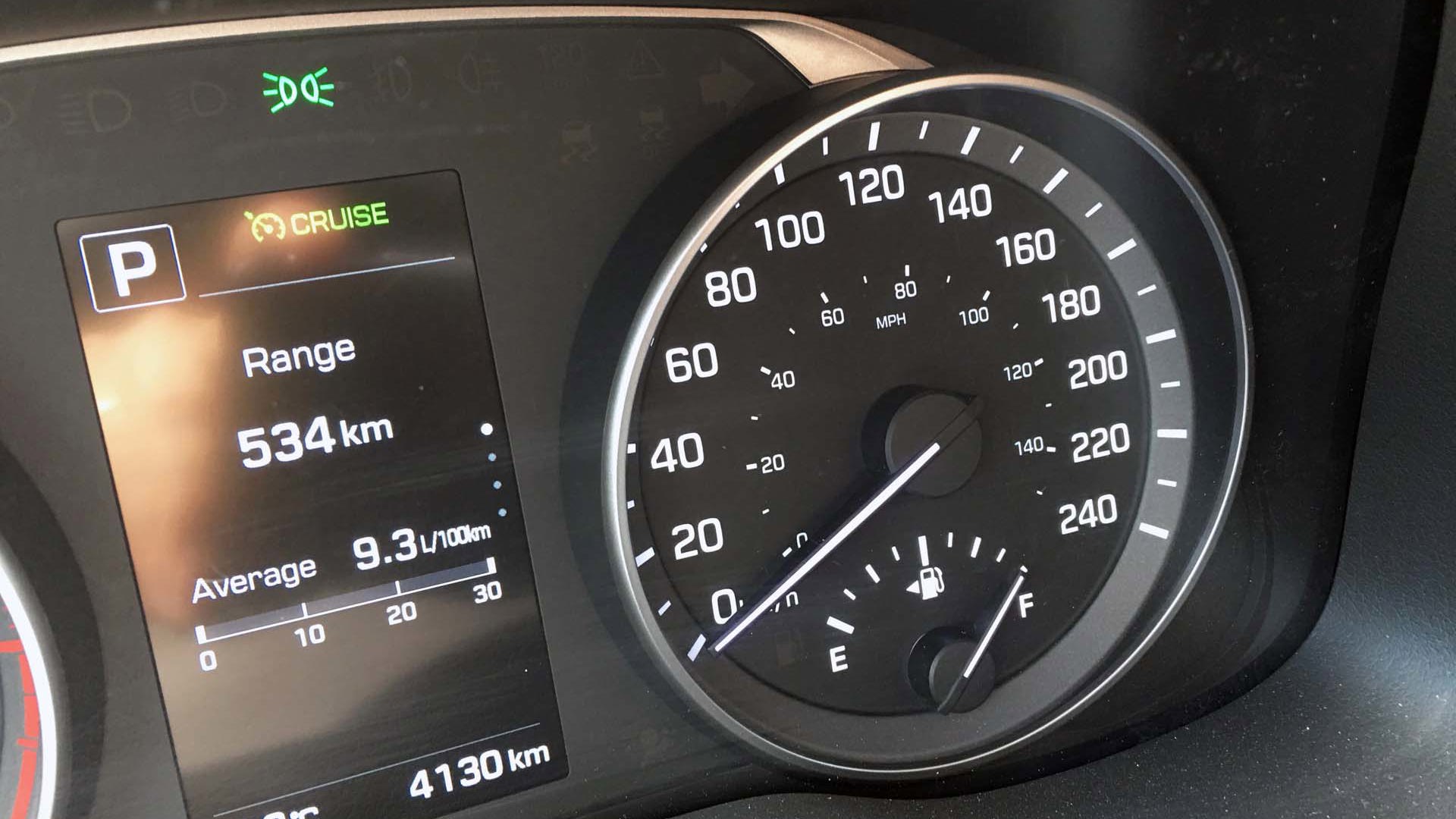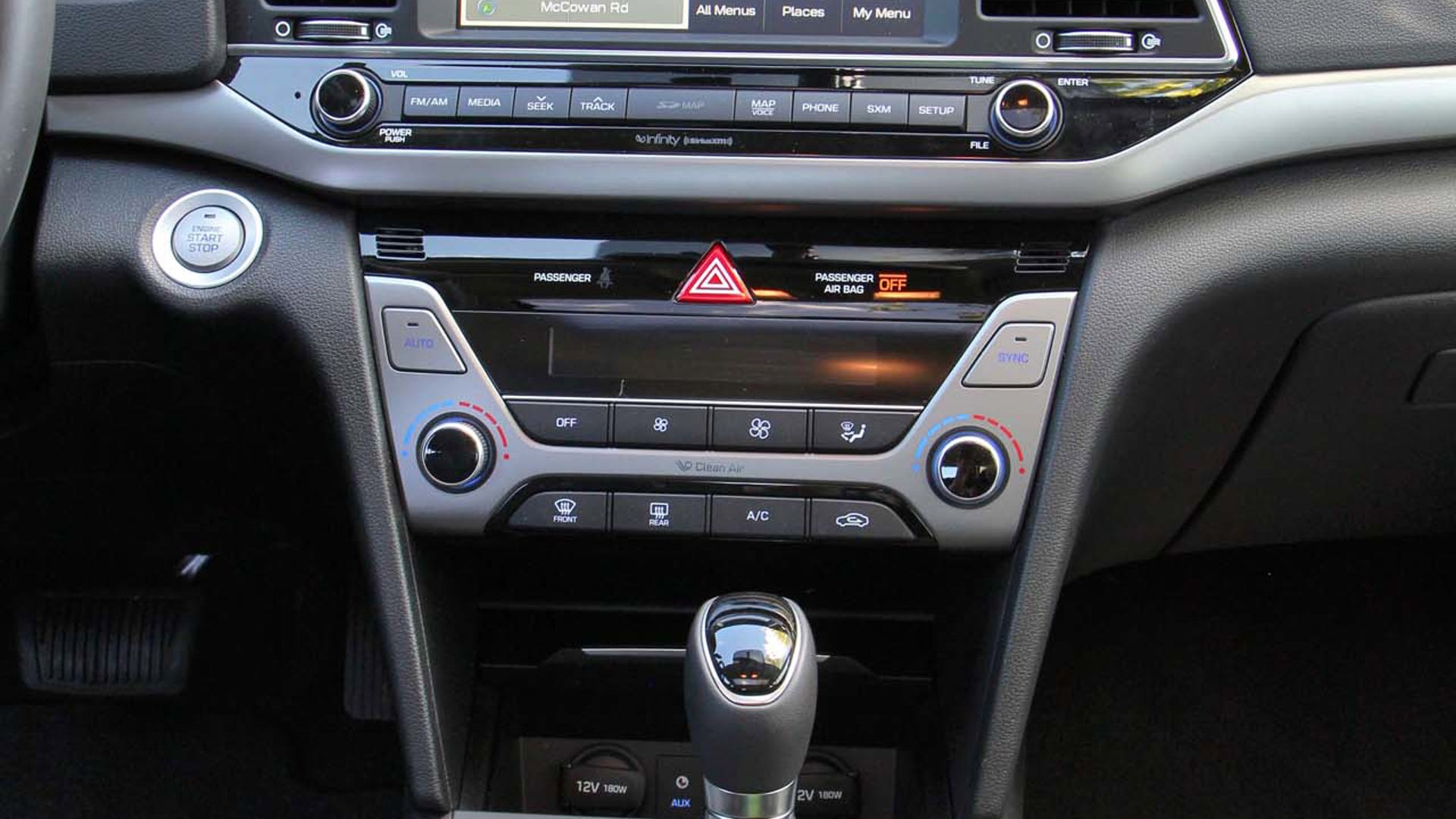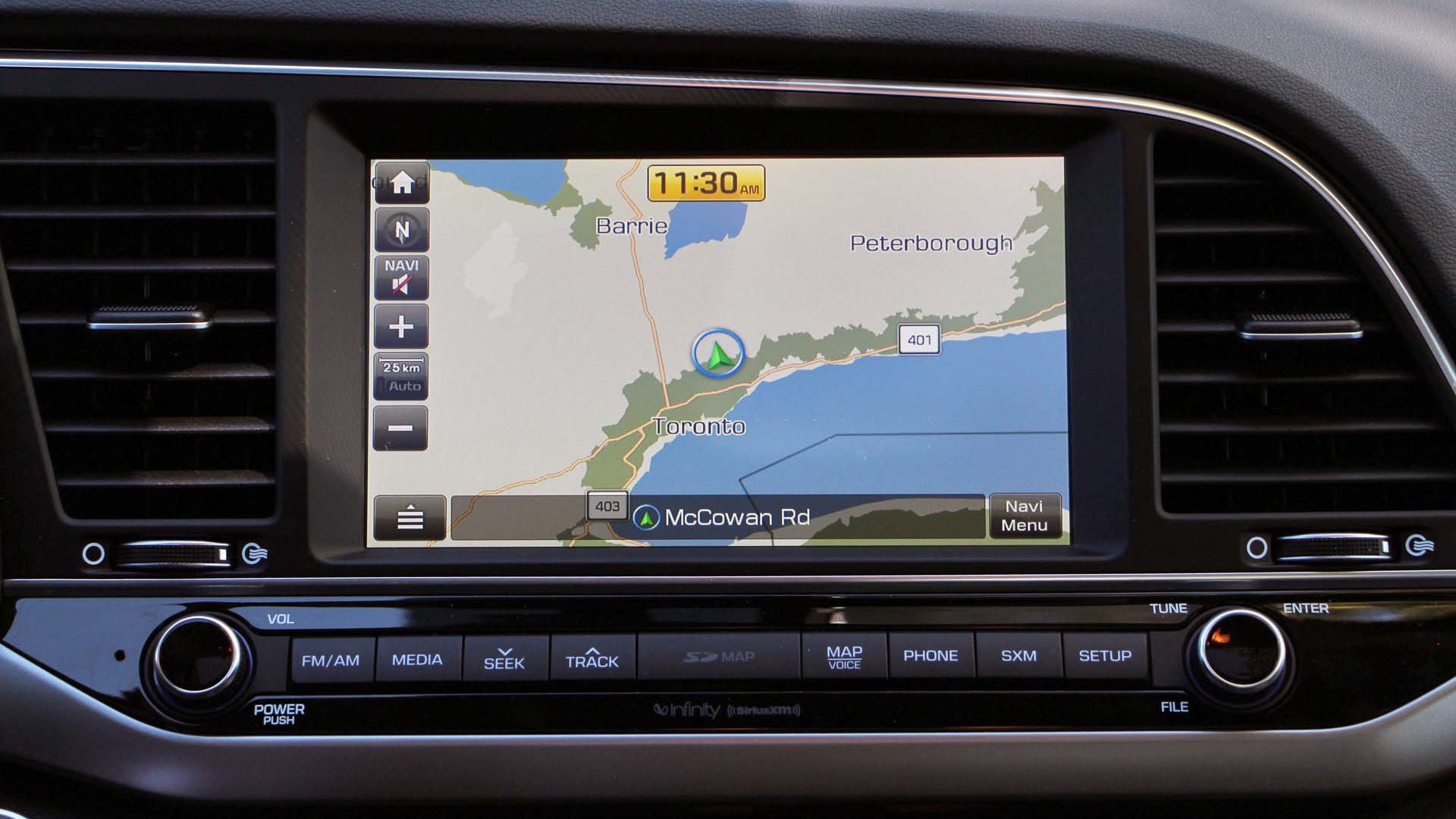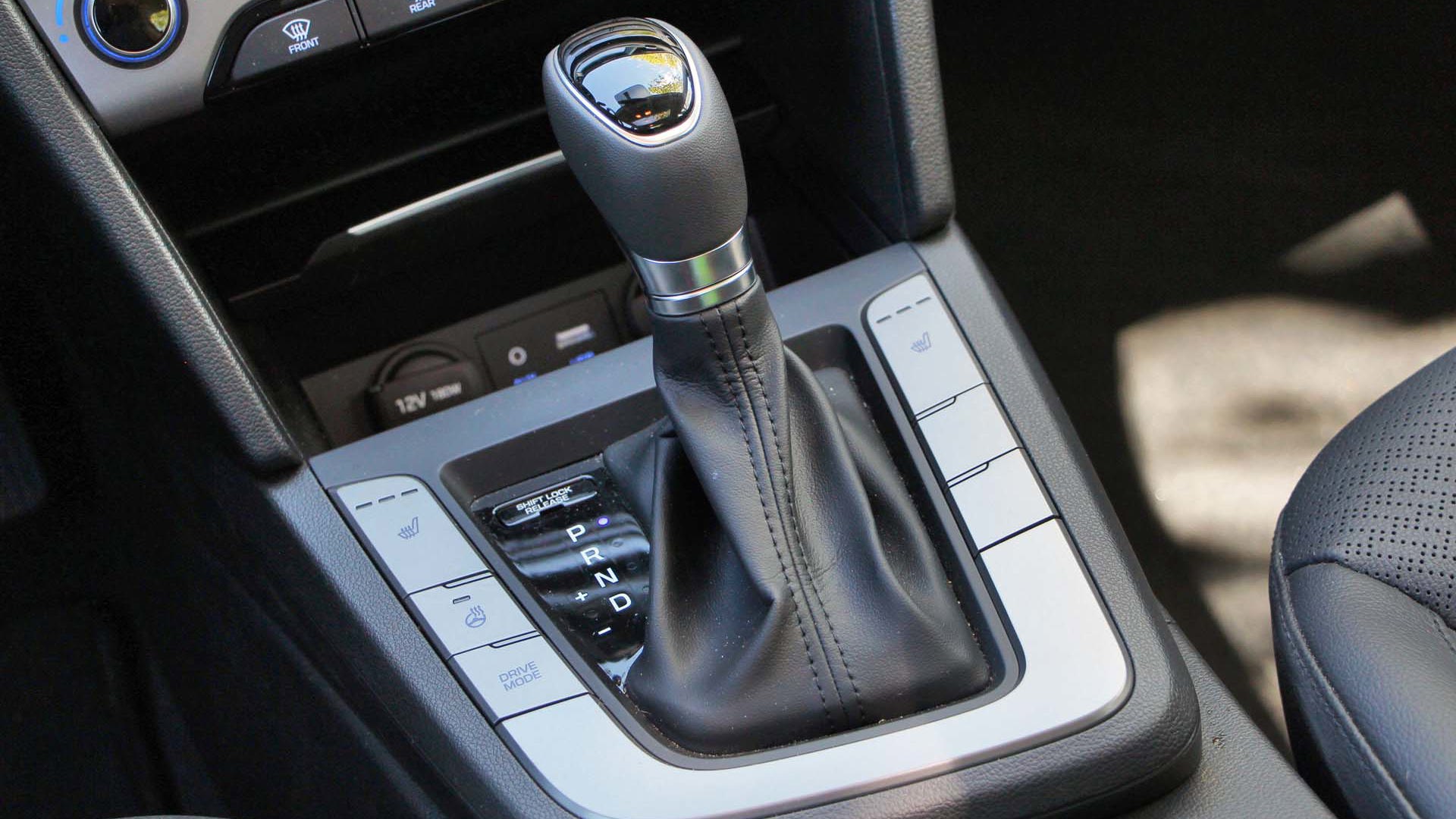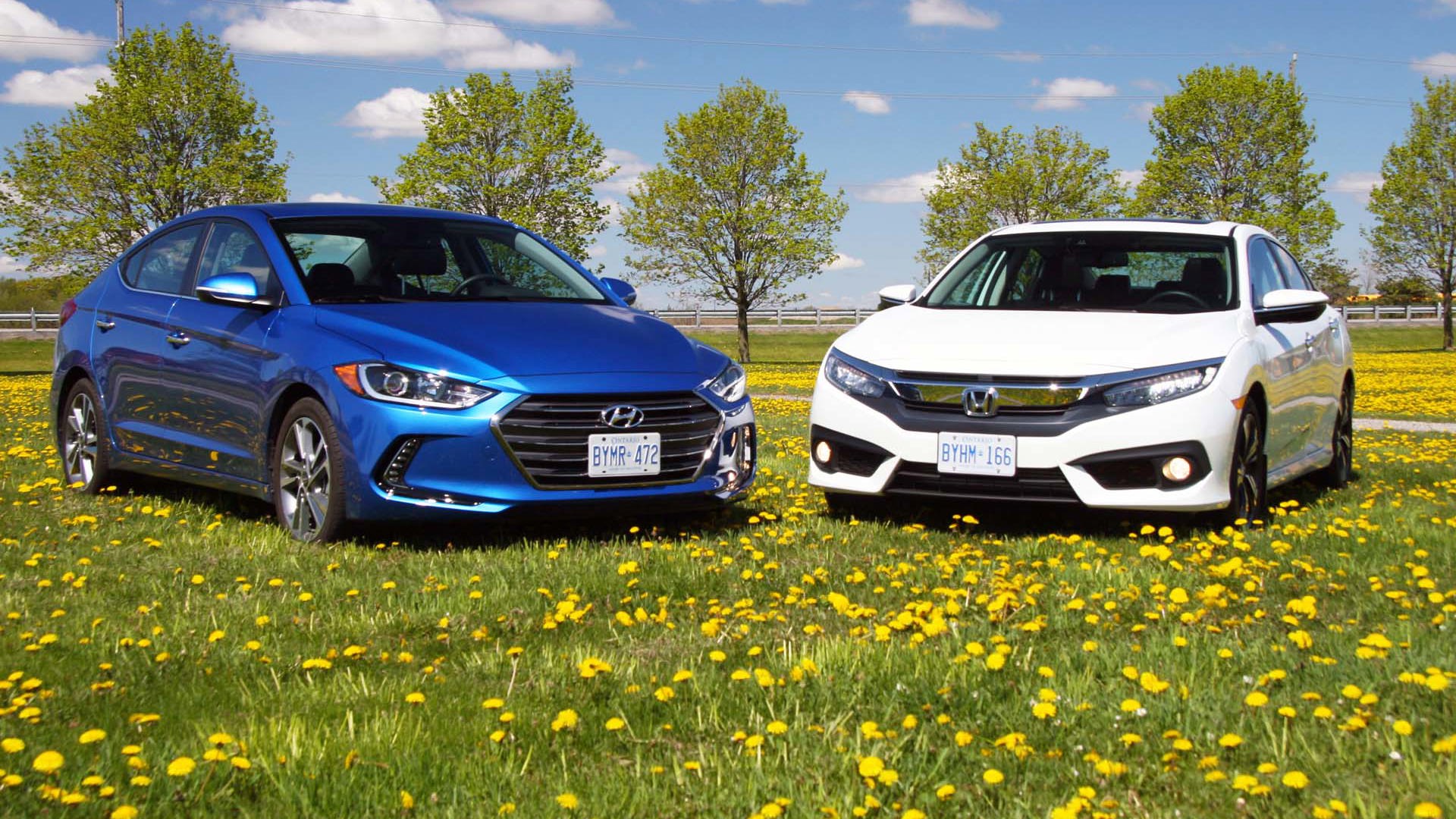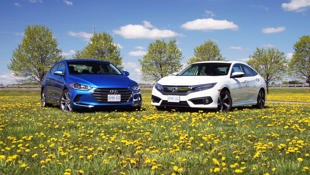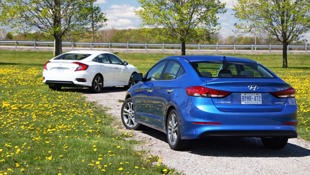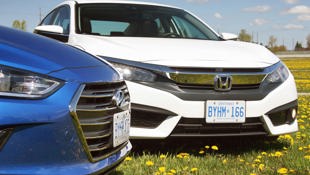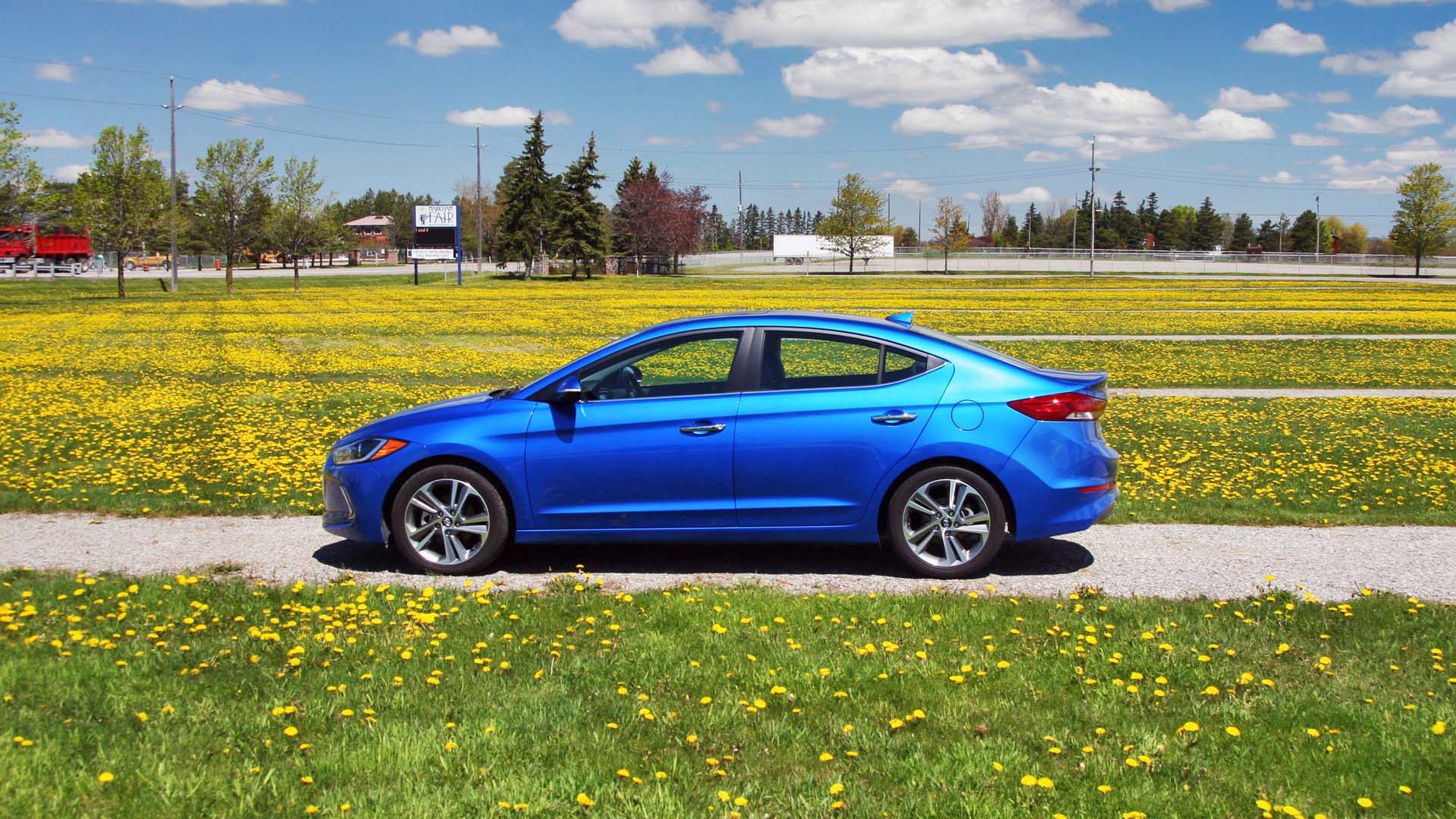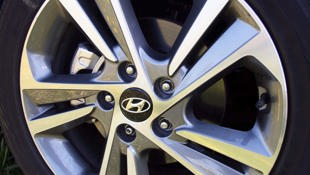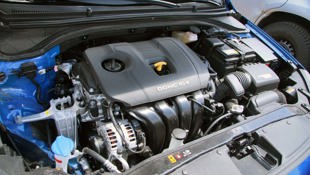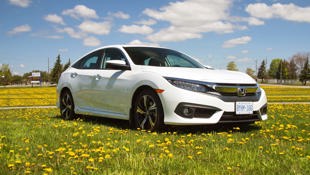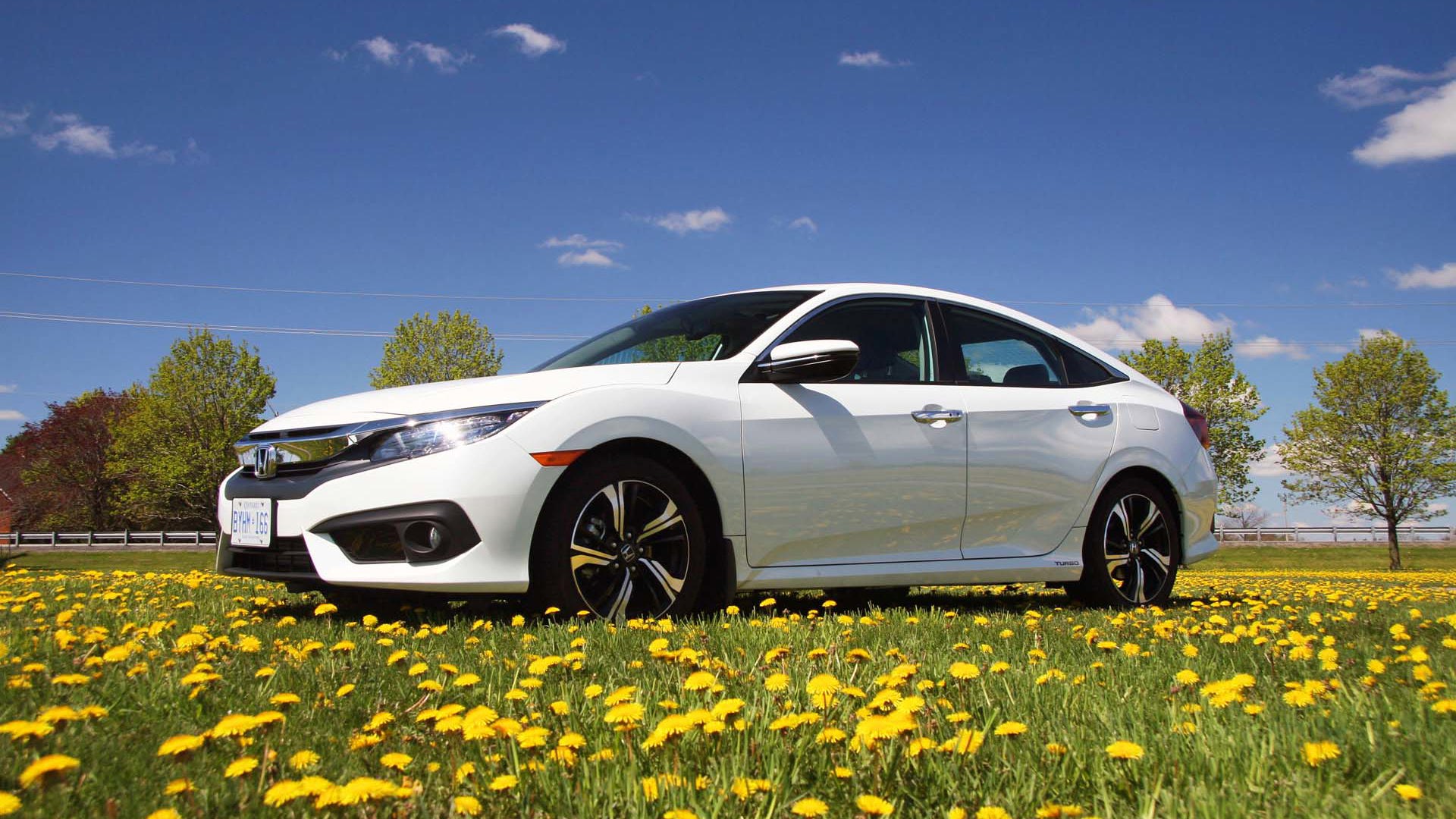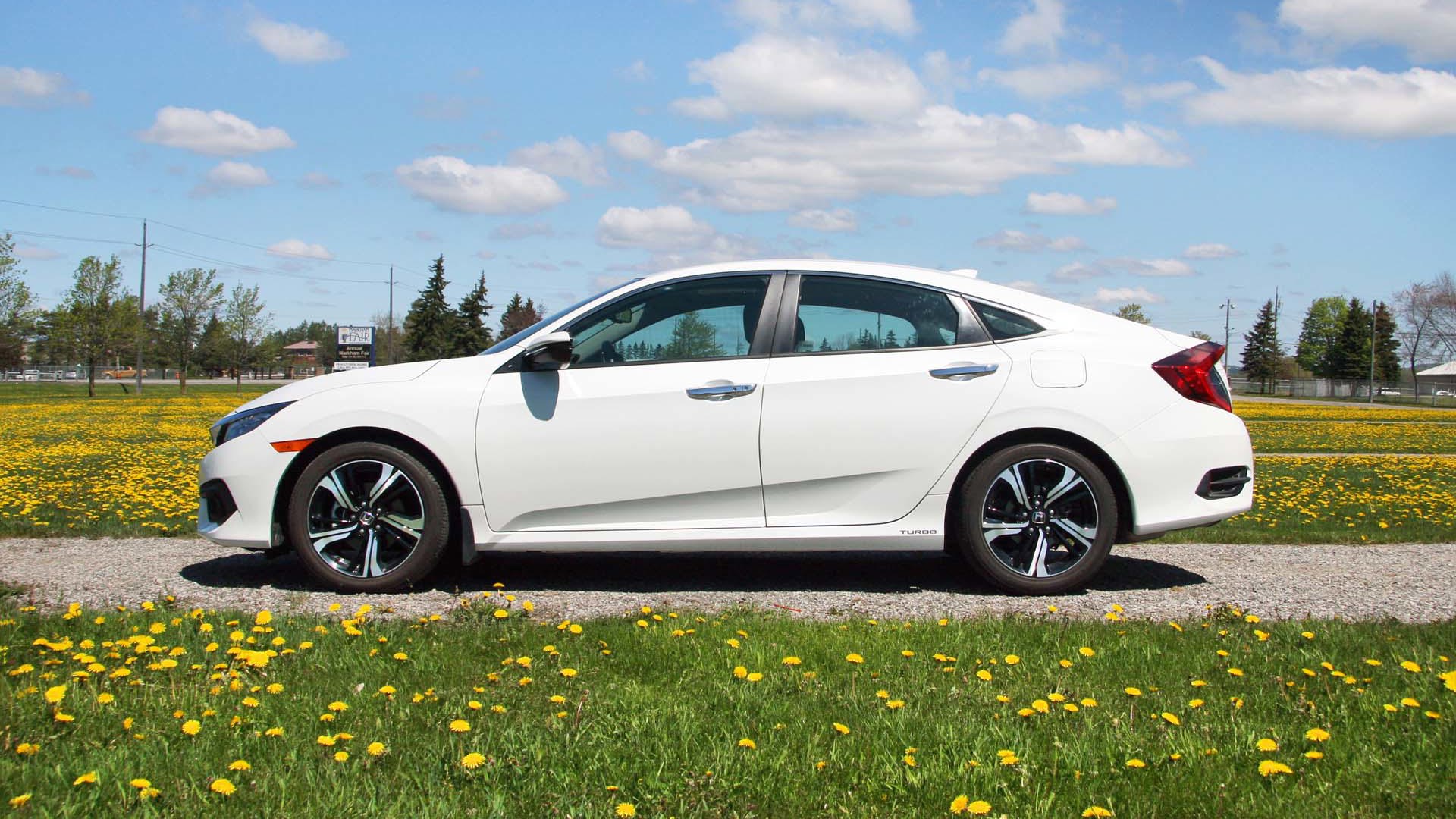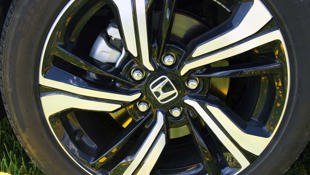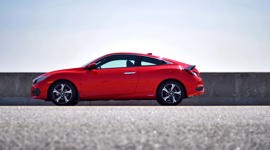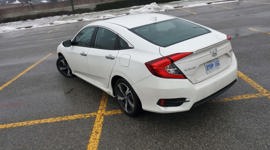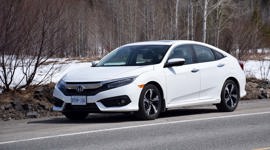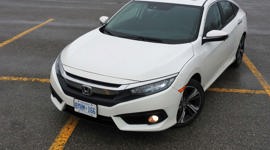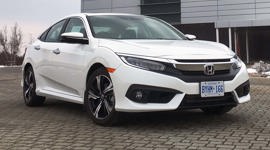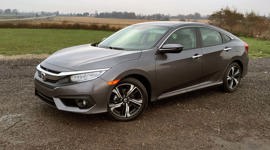Comparison Data
|
Base Price
$26,249
|
$26,990
|
|---|---|
|
Optional Equipment
None
|
None
|
|
A/C Tax
$100
|
$100
|
|
Destination Fee
$1,695
|
$1,595
|
|
Price as Tested
$28,044
|
$28,685
|
They may be small in stature, but make no mistake – these vehicles are the titans of the auto industry. Compact cars are the cornerstone of their respective manufacturers; their volume sales keep the lights turned on and replenish the funding for new development. If their modest sensibility doesn't interest you – consider this: without the Honda Civic, there'd be no new Acura NSX, and it's highly unlikely that Toyota would have gotten so tragically close to winning Le Mans if it hadn't been for all those millions of beige Corollas sold.
While either one would do an admirable job of fulfilling a buyer’s needs – the question remains, who does it best?
Reliable, economical, practical – those aren't the buzzwords of excitement and desirability. But millions of Canadians put their faith in those words, since their daily driver represents not only a significant chunk of their savings, but also their trust that it won't let them down and will keep them and their families safe.
There are more compacts sold in Canada than any other passenger car, and of these, the Honda Civic and Hyundai Elantra lead the segment.
While it's never again managed to reach 2008's zenith when it was the best-selling vehicle in the country, the Civic has been Canada's most popular passenger car for nearly two decades.
Slotting in between the subcompact Fit and the mid-sized Accord, the “compact” Civic sold nearly 65,000 units here last year. Needless to say, that's a position that Honda would not relinquish without a fight.
The Elantra, on the other hand, is truly an underdog. From a low of 11,814 sold in 2008, the Elantra's more than tripled its sales – even knocking the mighty Toyota Corolla off its second place on the podium.
Both of these cars have been fully redesigned, offer new powertrains and are laden with technology and features at a decent price. While either one would do an admirable job of fulfilling a buyer’s needs – the question remains, who does it best?
Second Place: 2017 Hyundai Elantra Limited
The Elantra's undergone a very subtle redesign, one that's more evolutionary than revolutionary. Where the previous model boasted exaggerated swoops and lines, the new Elantra is a more refined interpretation of Hyundai's "fluidic" design language. There's a wider, more upright fascia, flanked by boomerang LED daytime running lights, and the arched roofline finishes in a tidy, rather European rear end.
The dramatically sculpted lines have been smoothed out, and if the result is a softening of character, it's also an increase in aerodynamic efficiency.
While it's undoubtedly prettier and more refined than the car it replaces, the Elantra's lost the head-turning edginess that marked its ascension to the top of the segment. Hyundai sold nearly 48,000 Elantras in Canada last year, 242,000 in the U.S., and no doubt hope that its newfound maturity and larger dimension will broaden its customer base even more.
The trendy, youth-oriented cabin gives way to one that's obviously inspired by the mid-size Sonata. Instead of swoops, curves, digital gauges and gimmicky sliders, there are now clean lines and simple switches. All Elantras are generously equipped with standard 7.0-inch touchscreen, heated front seats and – from mid-range GL upwards – have heated rear seats and steering wheel as well.
Our Limited model tester has leather upholstery, heated front seats and steering wheel, and eight-way power adjustable driver's seat. At this trim level there's an 8.0-inch touchscreen display with navigation and Android Auto – but no Apple CarPlay. There's a lot of handy storage cubbies, and the 407 L trunk is about mid-pack for the segment – but less than the Civic's.
Underhood is a new 2.0L four-cylinder engine that uses Atkinson cycle technology for better fuel efficiency. But its 147 horsepower and 132 lb-ft of torque fall far short of the 2.0L previously found in upper trim levels, which put out 173 hp and 154 lb-ft. Fuel consumption ratings are 8.3 L/100 km city and 6.4 L highway – which isn't as good as the Civic, which also offers more power.
Mated to a six-speed automatic, the powertrain's enough to satisfy most of the demands of a daily driver, but ask for any more and it groans in protest – particularly when in Sport mode. Drop it down to Eco, and it putts along nicely – if a bit lethargic in response.
Variable-assist steering is on the light side, with little feedback, but it does make for easy parking-lot manoeuvres.
But overall, the Elantra Limited's extra sound absorption does an admirable job, and the result is a nice, quiet ride over even the roughest of pavement.
The basic platform is the same, but the chassis has been stiffened by 30 percent thanks to more structural adhesives and high-strength steel. The rear suspension has been repositioned, with re-tuned springs and dampers.
The previous model tended to get a little "busy" over rough pavement – the revised rear setup delivers more composed handling. Still, it's not a car that compels the driver to drive "energetically" – the numb steering combined with the modest powertrain are better suited to relaxed cruising.
That's not necessarily a bad thing. There are plenty of drivers who prefer value and comfort over performance, and the new Elantra fulfills that role admirably Overall, it's a nicely balanced little sedan that offers a lot of refinement for its segment.
Winner: 2016 Honda Civic Touring
In contrast to the Elantra, which played it safe with careful, refined styling – the new Civic is a no-holds-barred, edgy redesign with dramatically sharpened sheet metal.
Having fielded its fair share of criticism for previously uninspired design, the tenth-generation Civic has been re-made from tip to tail. It's a polarizing look that will probably lose some fans, but will please those who embrace a fresh, modern design.
The bold new face boasts available LED headlights, and the tidy rear also receives LED lighting. It is 75 mm longer, 126 mm wider, yet 31 kg lighter than the model it replaces.
If the exterior is striking in its departure, the cabin is a quantum leap forward. Gone is the two-tier instrument display – replaced with a full digital speedometer, and the overall design is a step up in refinement. There's more soft-touch material in the cabin and the 7.0-inch infotainment centre also offers both Android Auto and Apple CarPlay smartphone integration.
Base models receive a power upgrade too, via a new 2.0L four-cylinder replacing the outgoing 1.8. Producing 158 hp and 138 lb-ft of torque, it's mated to either a six-speed manual or a continuously variable transmission.
However, upper trim levels such as our Touring receive an all-new twin-scroll turbo-four producing 174 hp and 162 lb-ft. Unfortunately, this engine choice comes only with the CVT.
Torque is available from 1,700 rpm, and needless to say, the power difference between it and the Elantra is immediately apparent. There's no getting away from the CVT's inherent moaning, but it's relatively quiet for its ilk. And under normal operation it keeps the engine operating at peak efficiency, delivering 7.6 L/100 km city and 5.5 L highway.
During a romp at autoTRADER's top-secret proving grounds, the Civic's revised suspension showed itself in its composure over the tight and twisty route. The new platform is 25 percent stiffer, resulting in less roll and quicker recovery than the Elantra over the same course. Knock the shifter into "Sport" and the CVT groans in protest, but the quicker throttle response is far more satisfying during "energetic" driving. The steering is less numb than the Elantra's, and the wheel itself is satisfyingly meaty.
The Civic's connectivity interface is still annoyingly convoluted, with buttons and myriad screens instead of simple knobs. But as far as tech goes, the Civic is the hands-down winner over the Elantra.
In addition to the brilliant side-mirror camera, which displays cyclists and obstacles in the right-side blind spot, there's a host of features once seen only in the premium sedan segments. There's automatic braking, LED headlights, forward collision alert and adaptive cruise control. Those can be had on the Elantra too, but only by moving up to the $28,799 Ultimate model.
As daily drivers, they're comparable. Less soft and more engaging than the Elantra, the Civic is the choice for drivers looking for sporty engagement.
